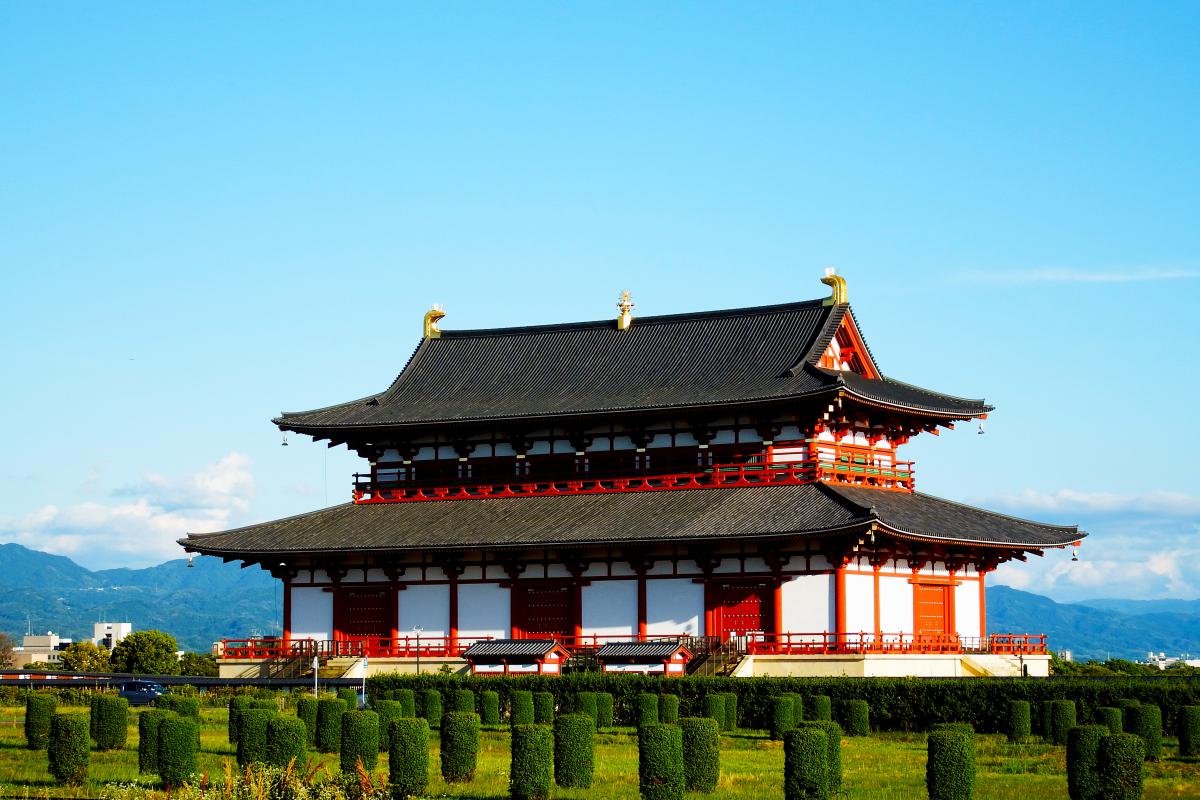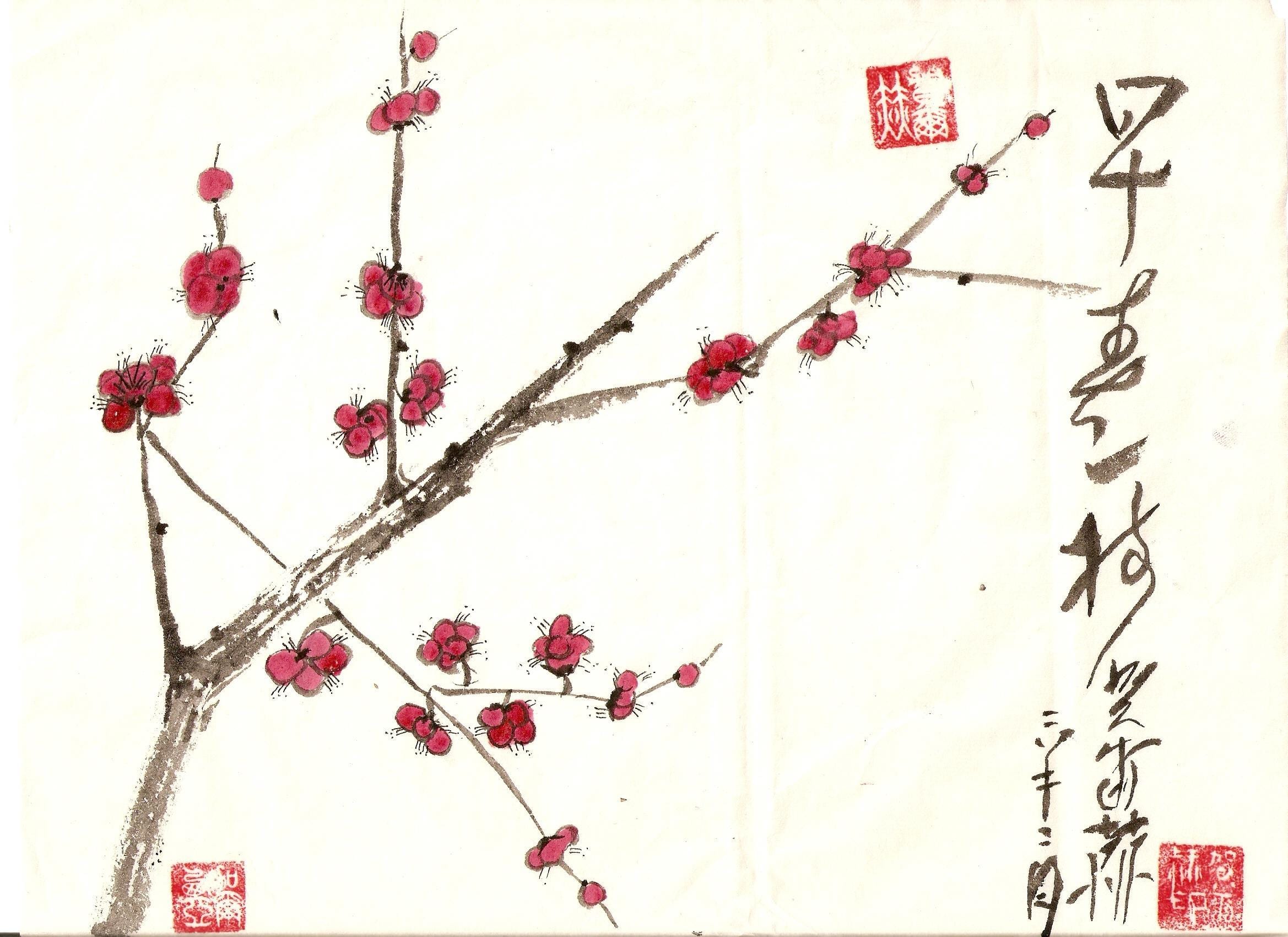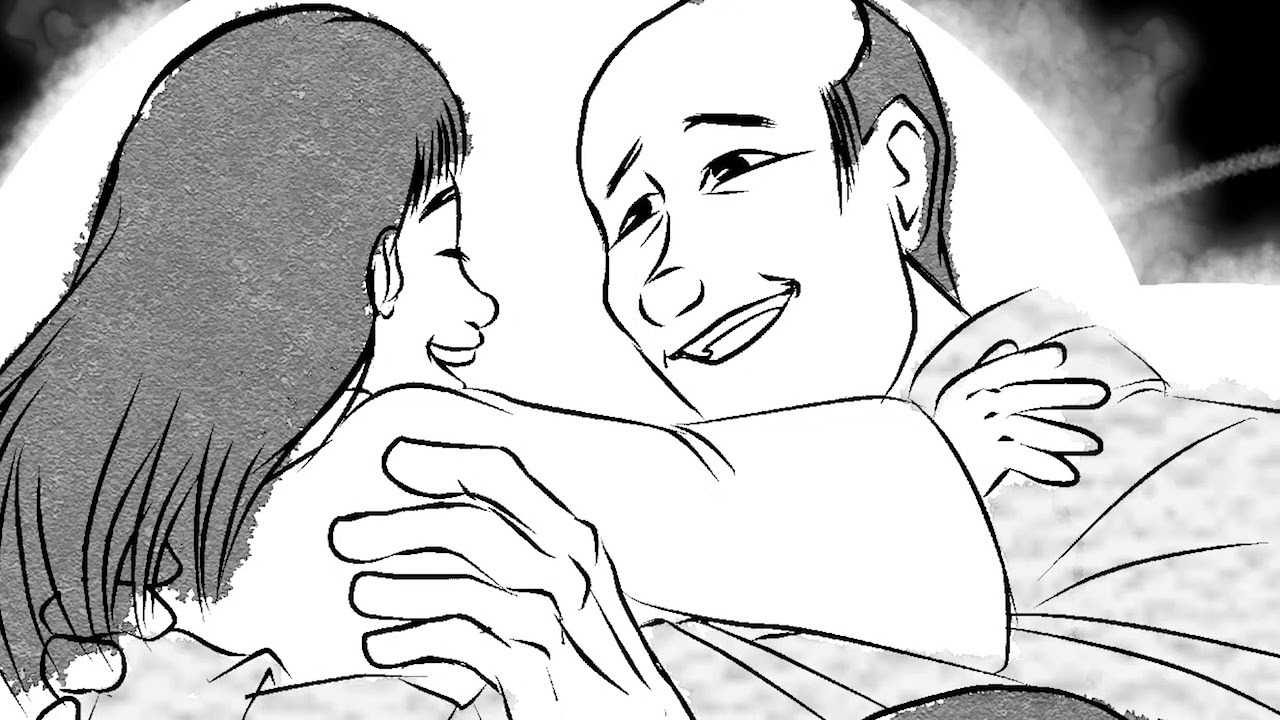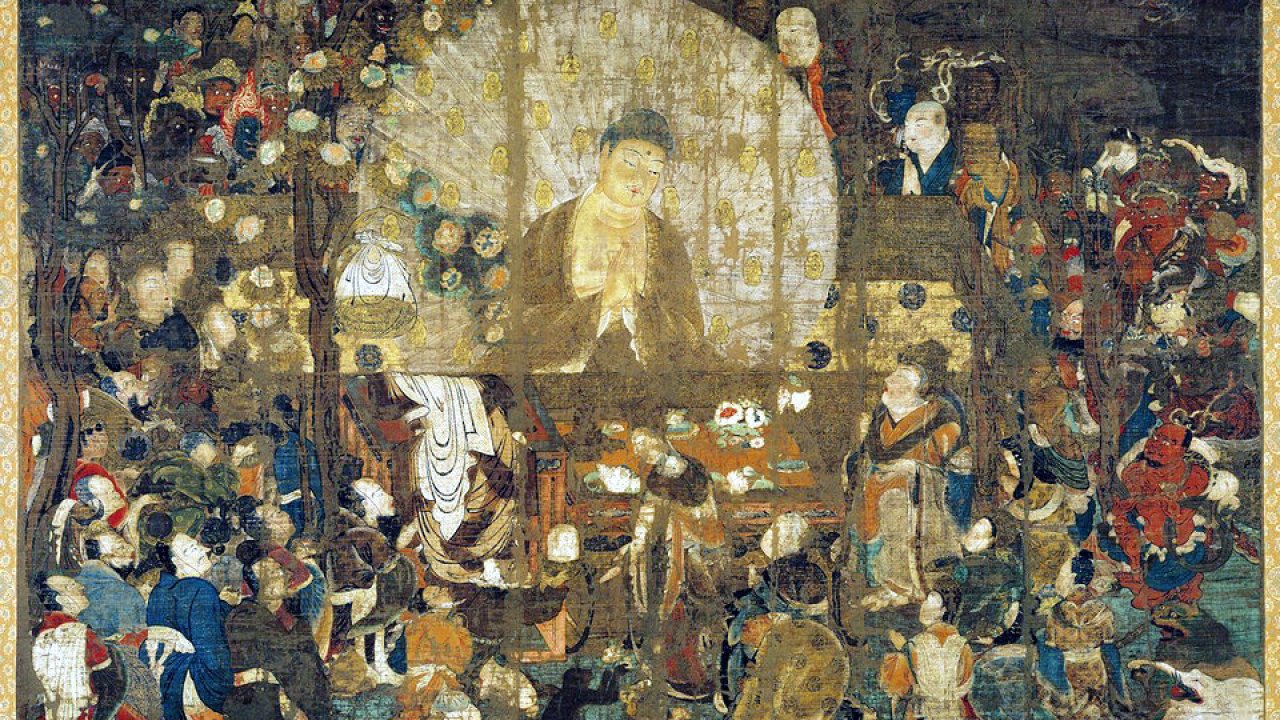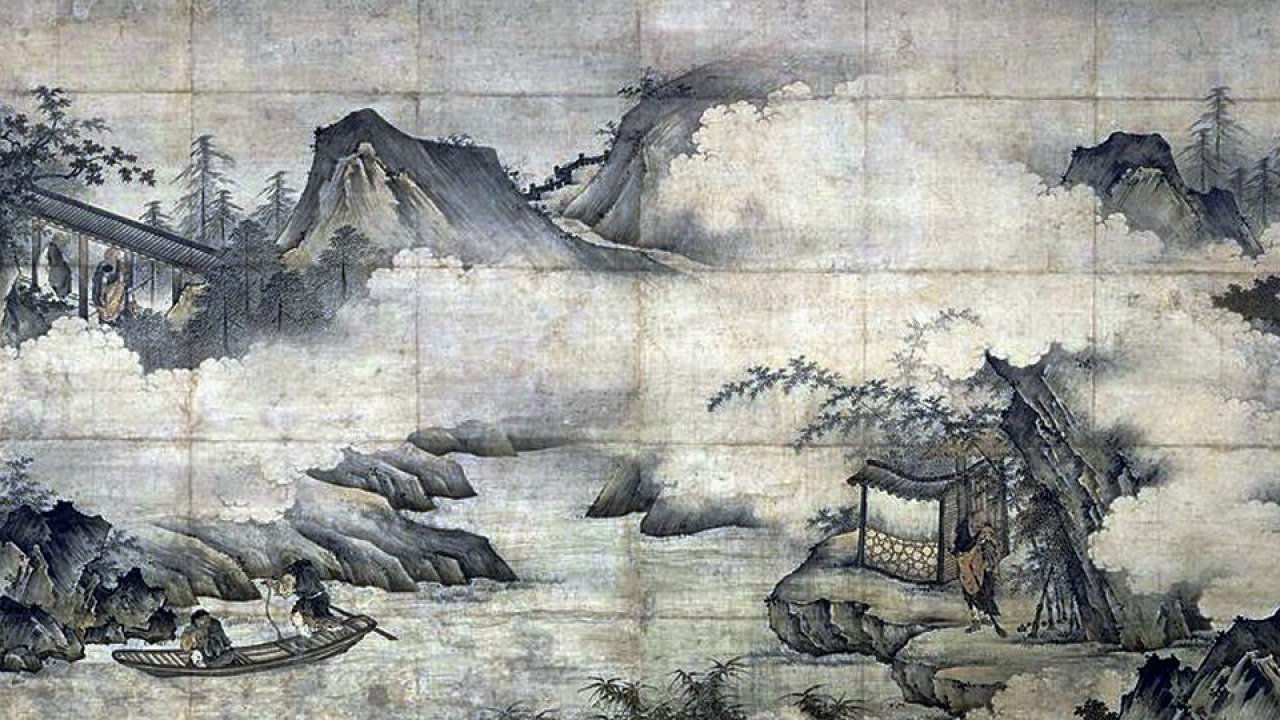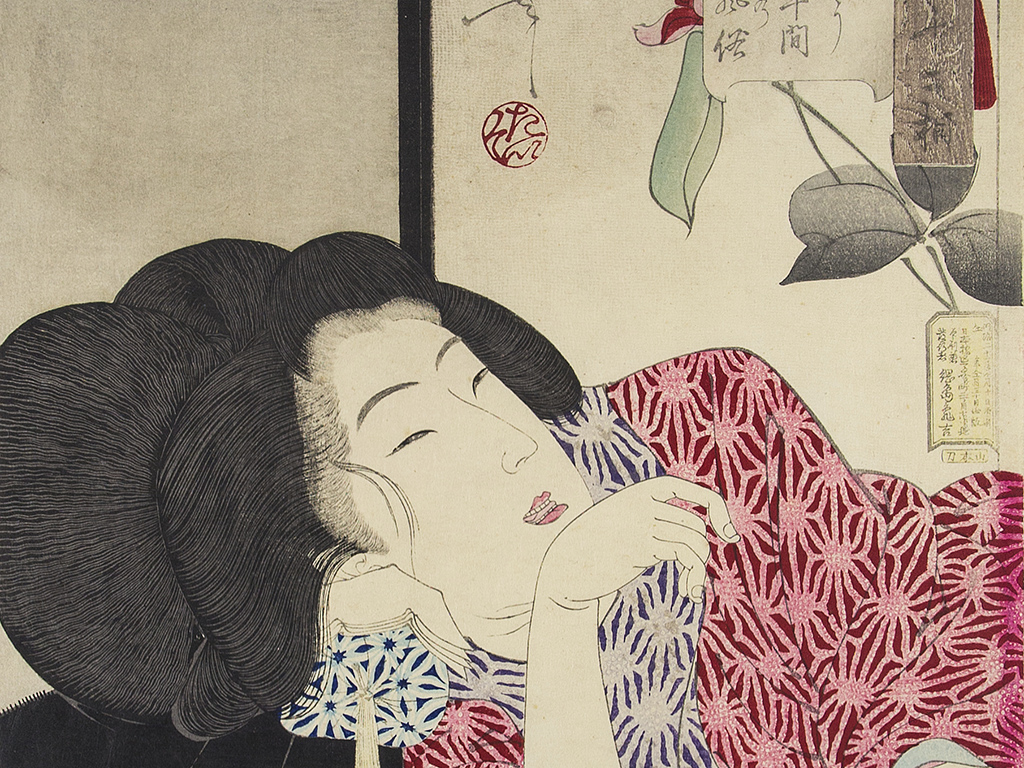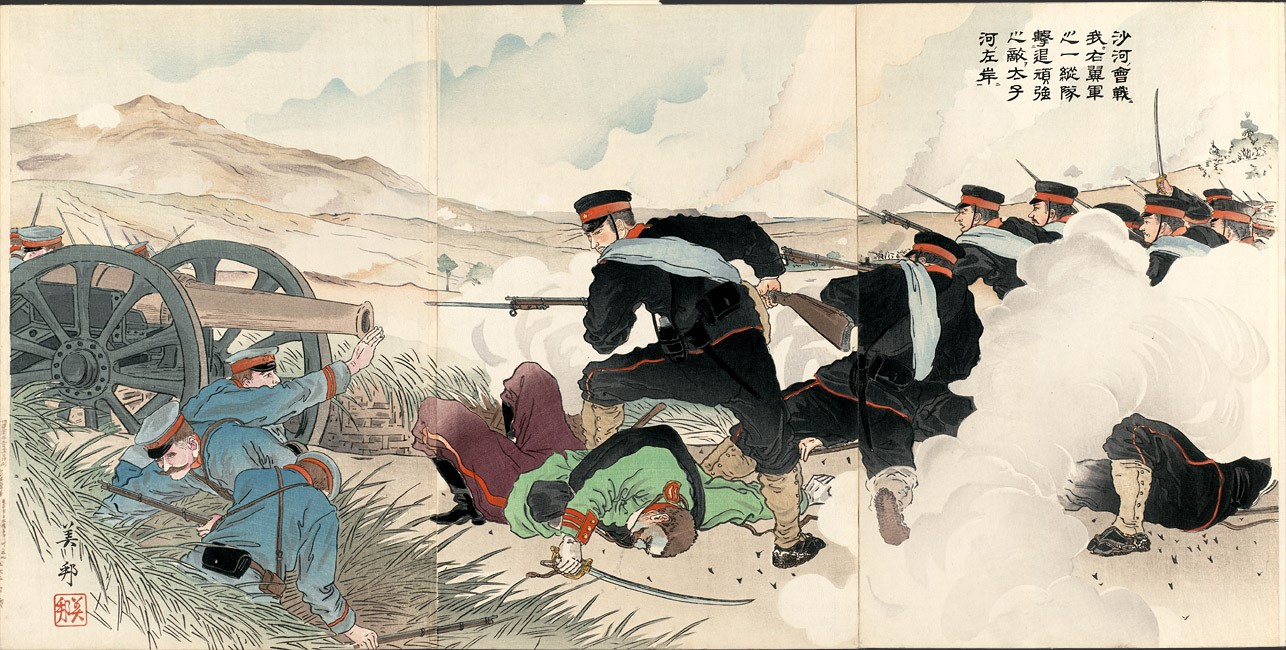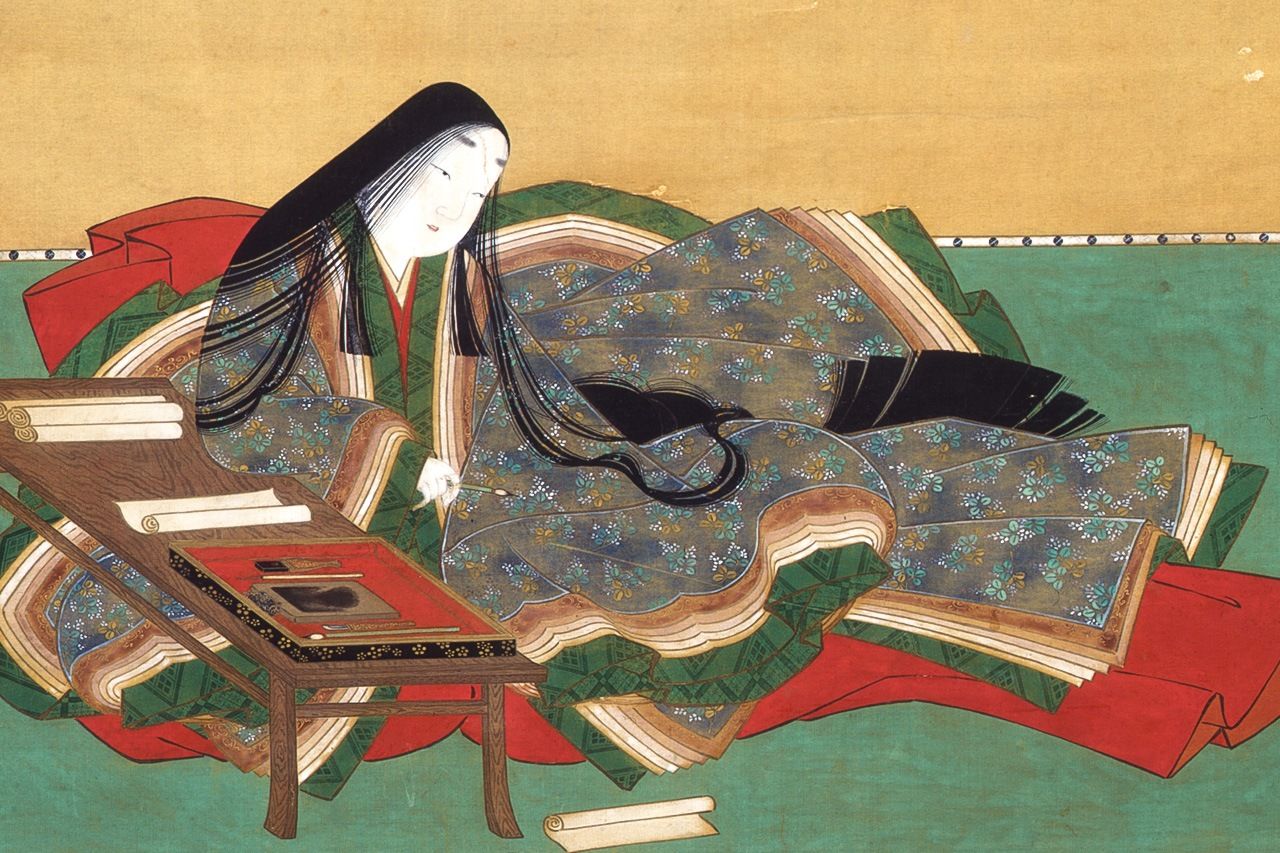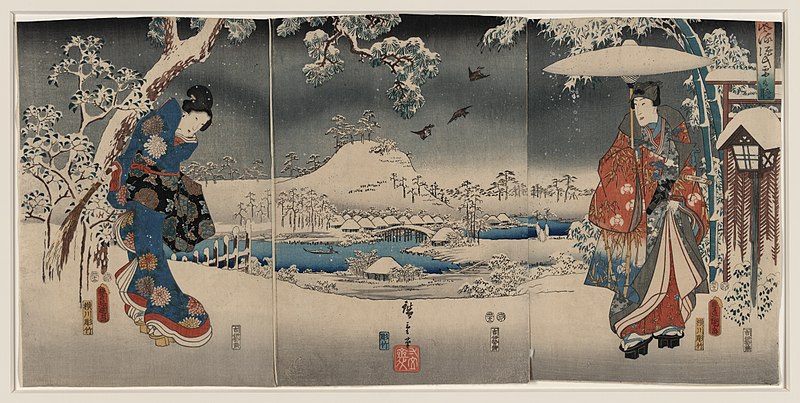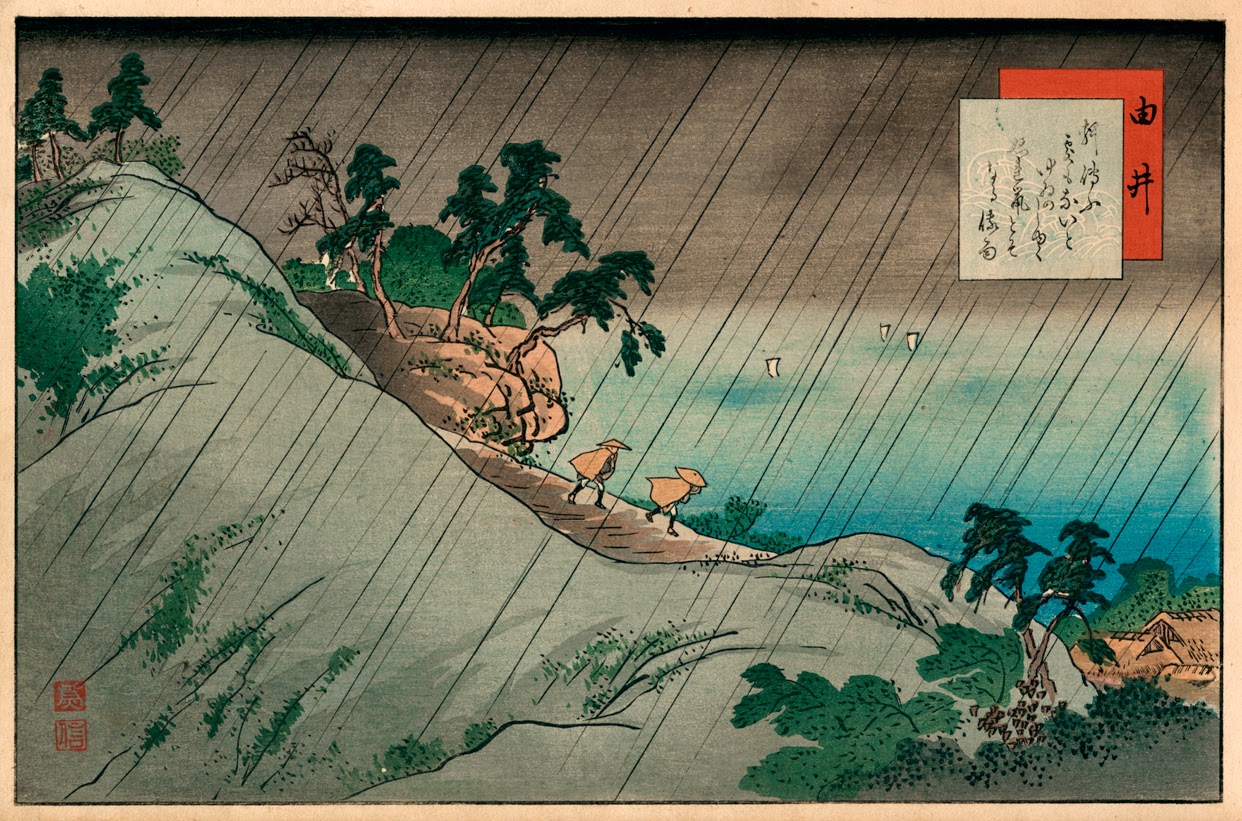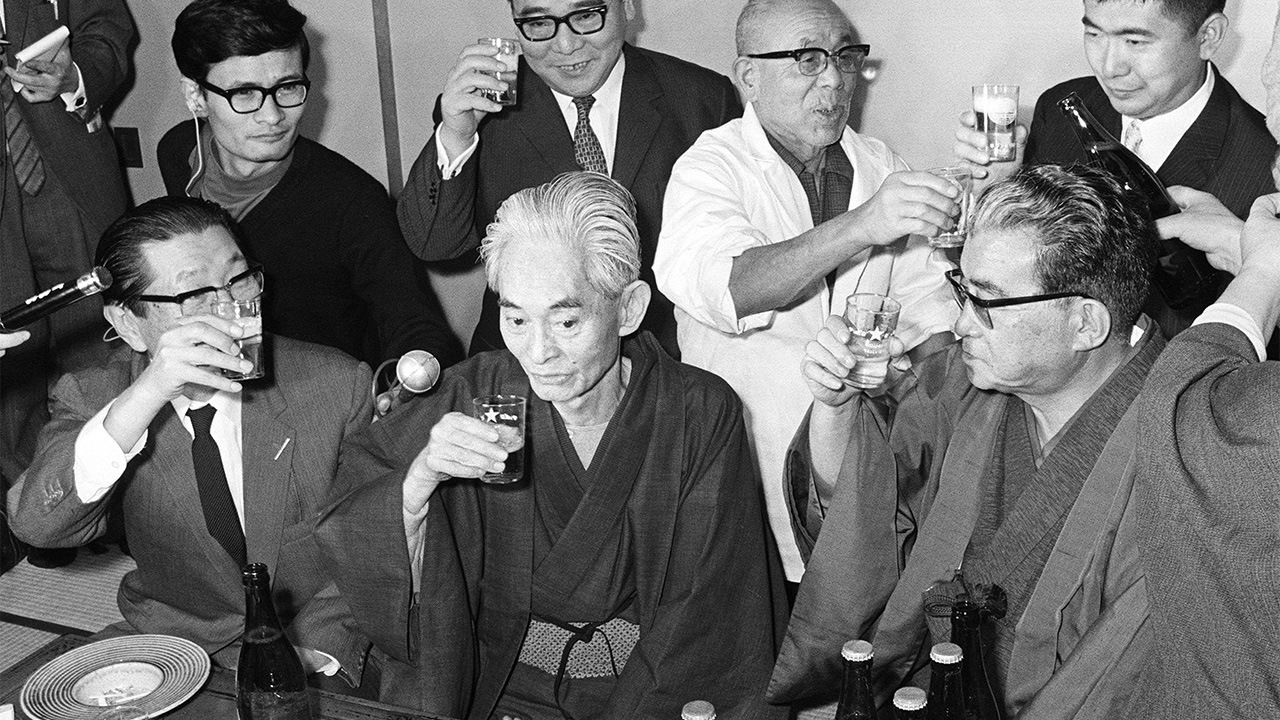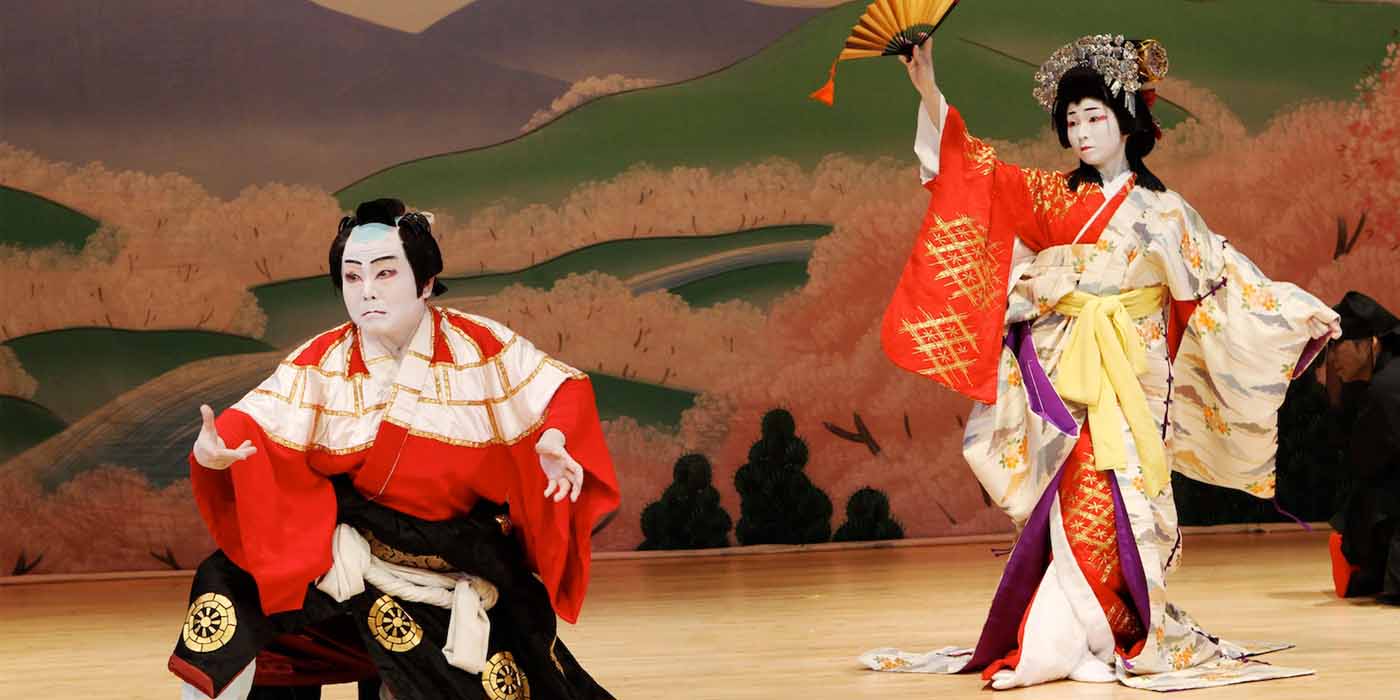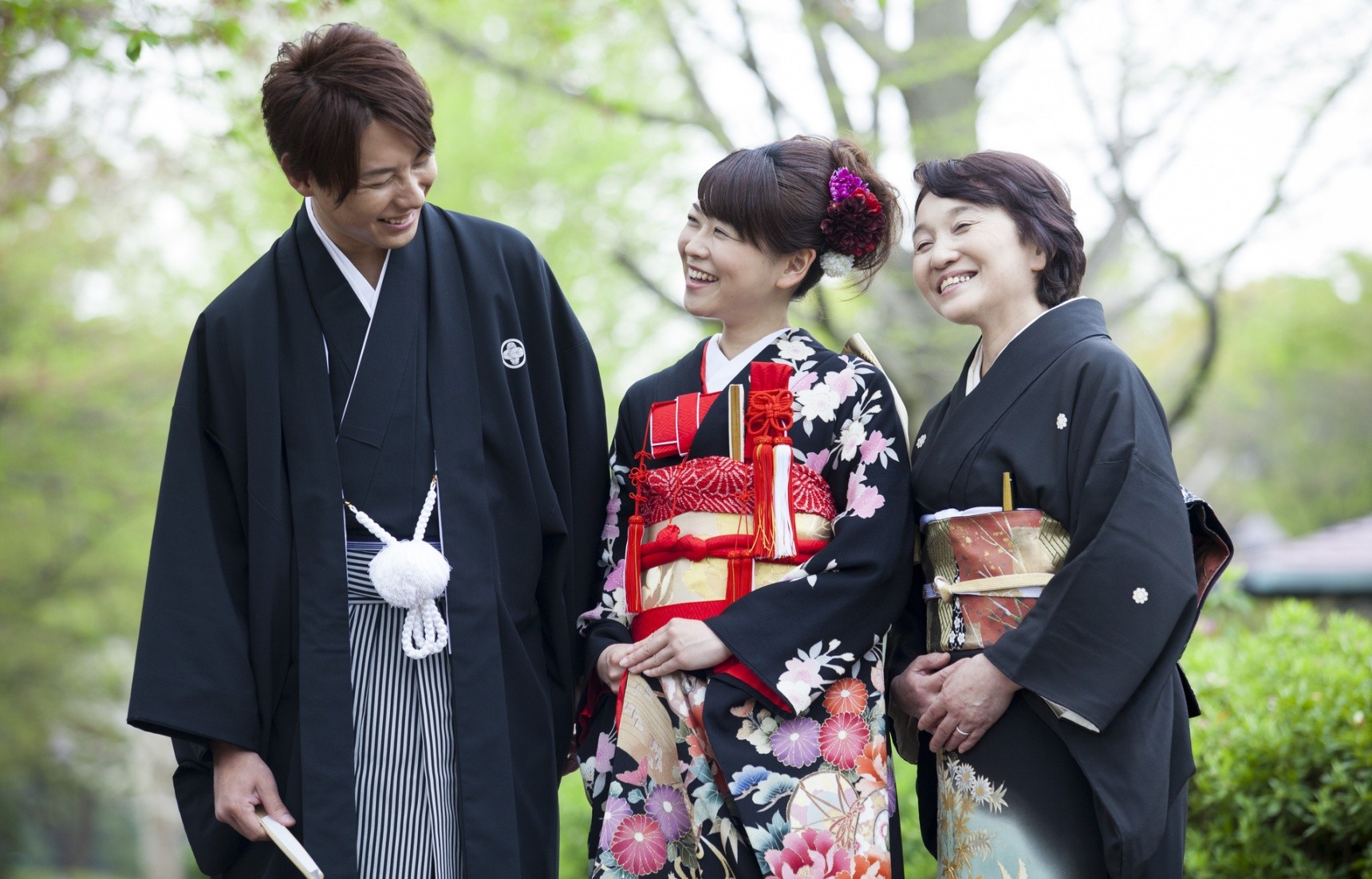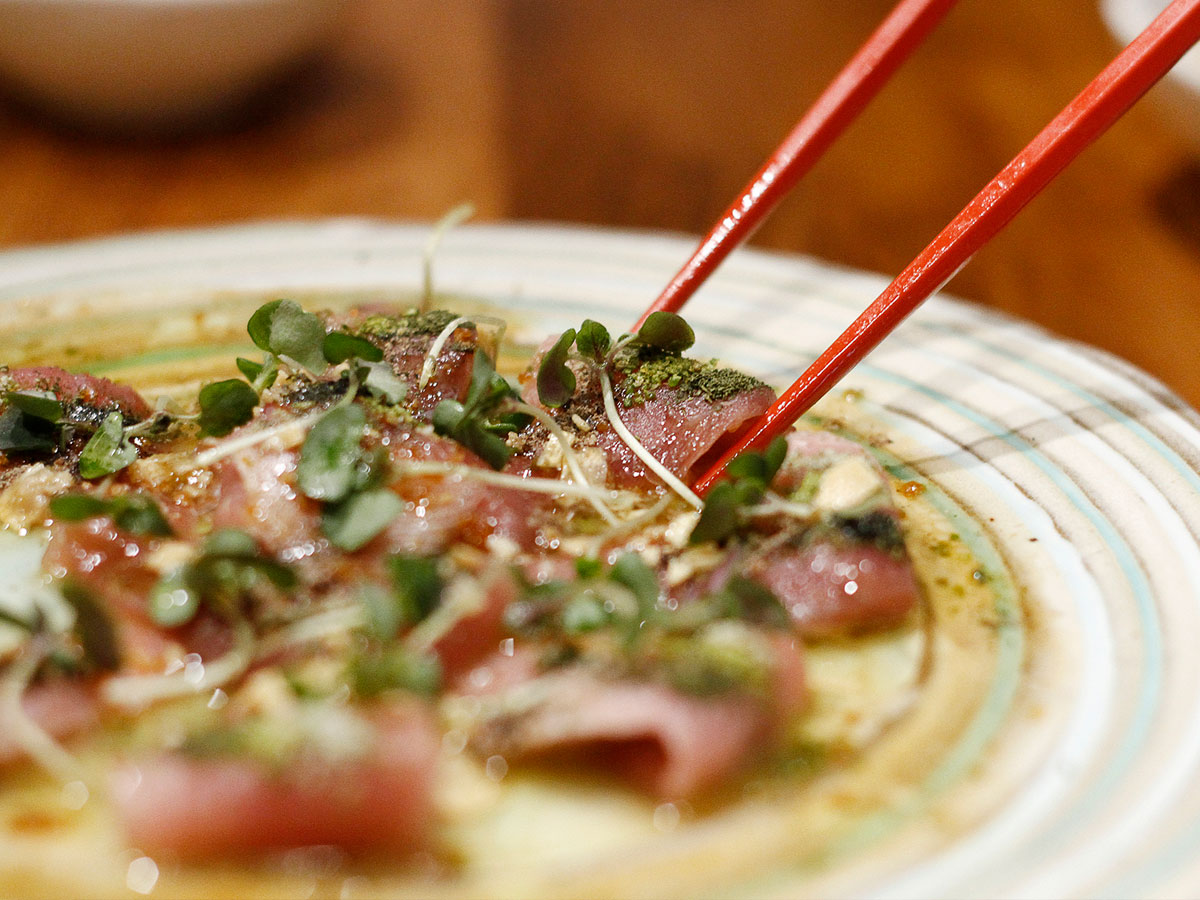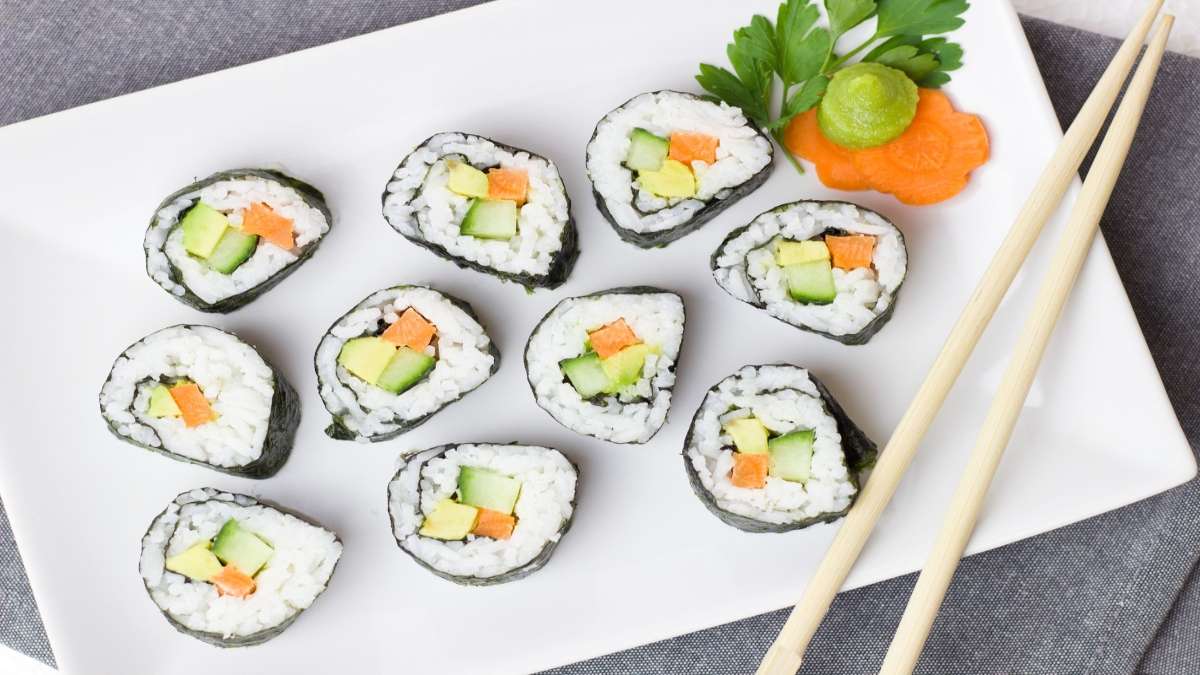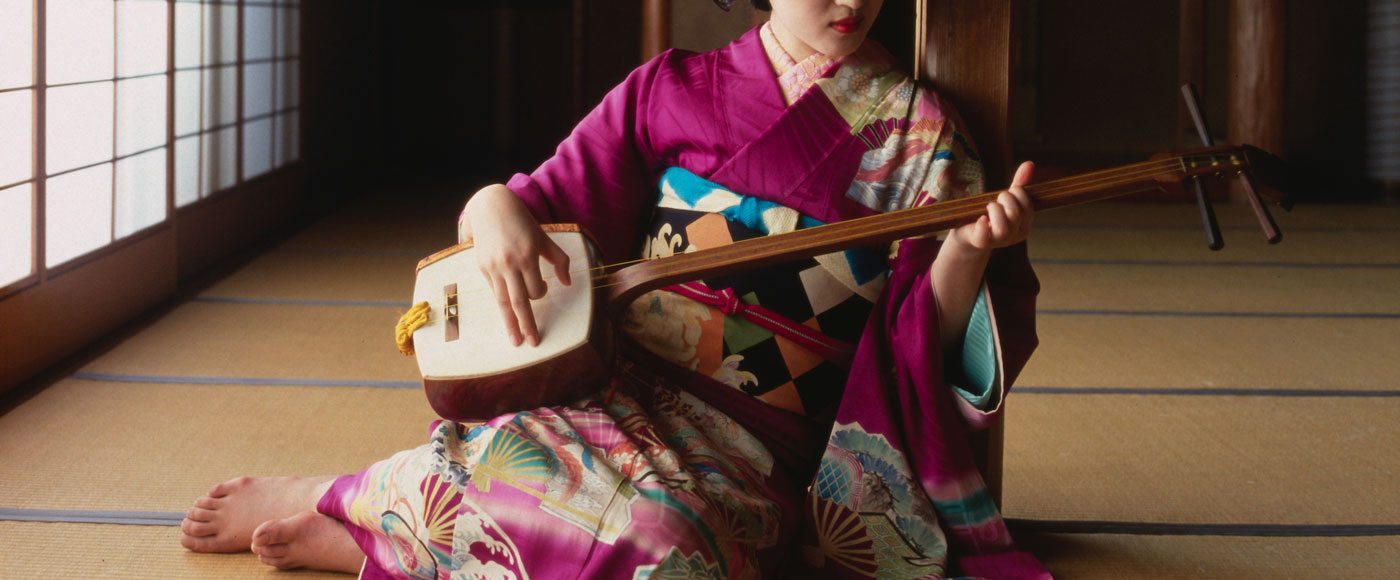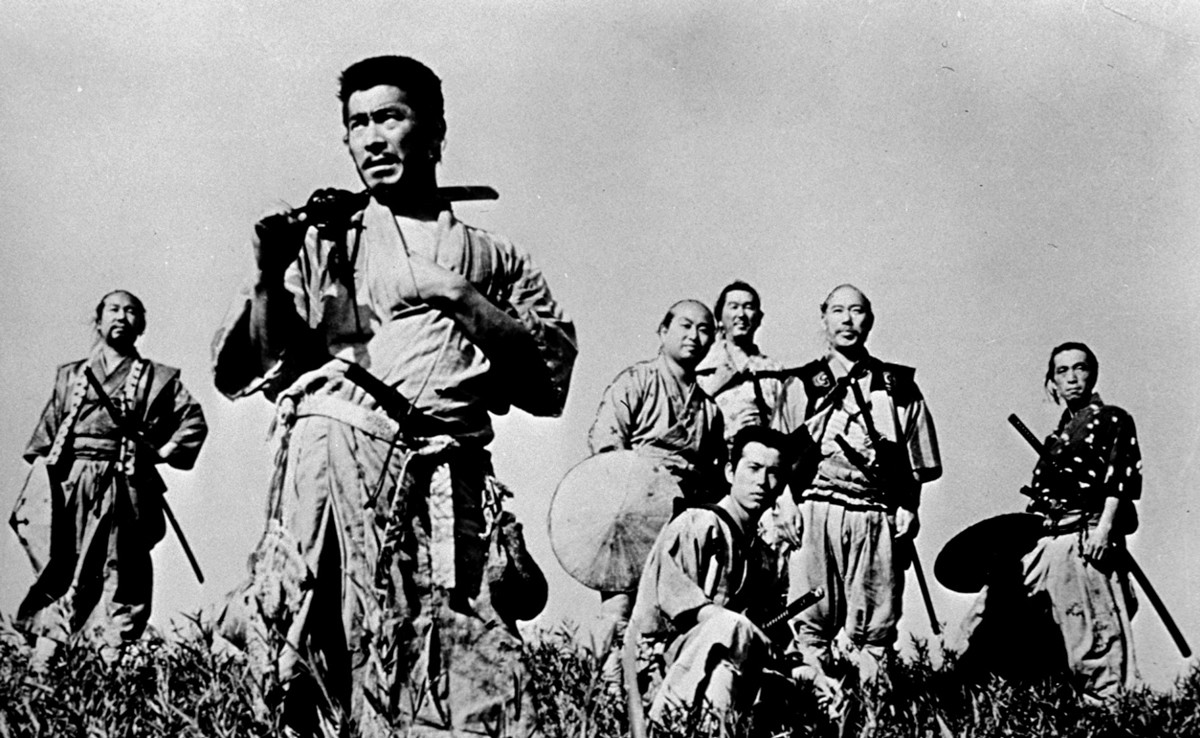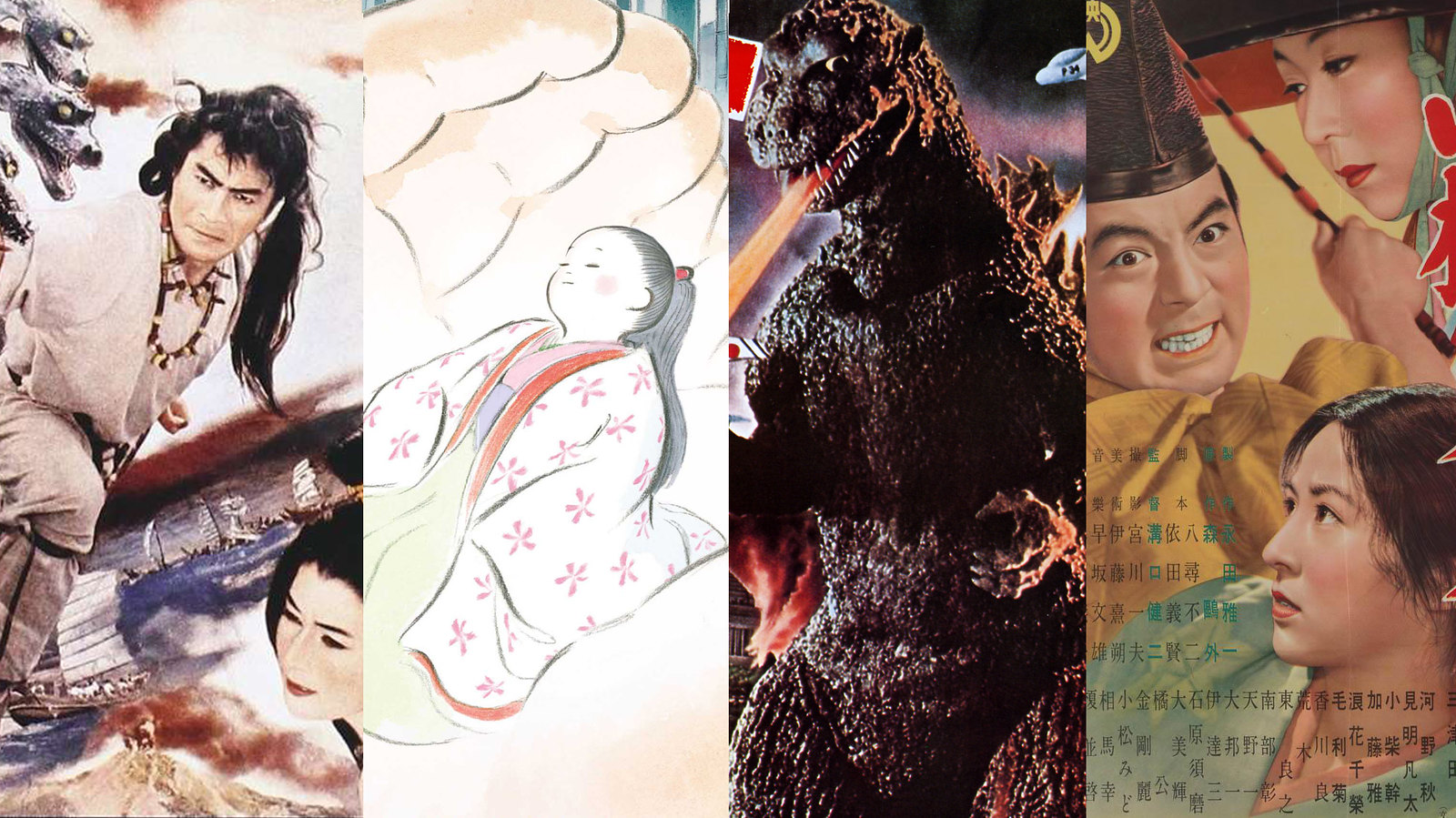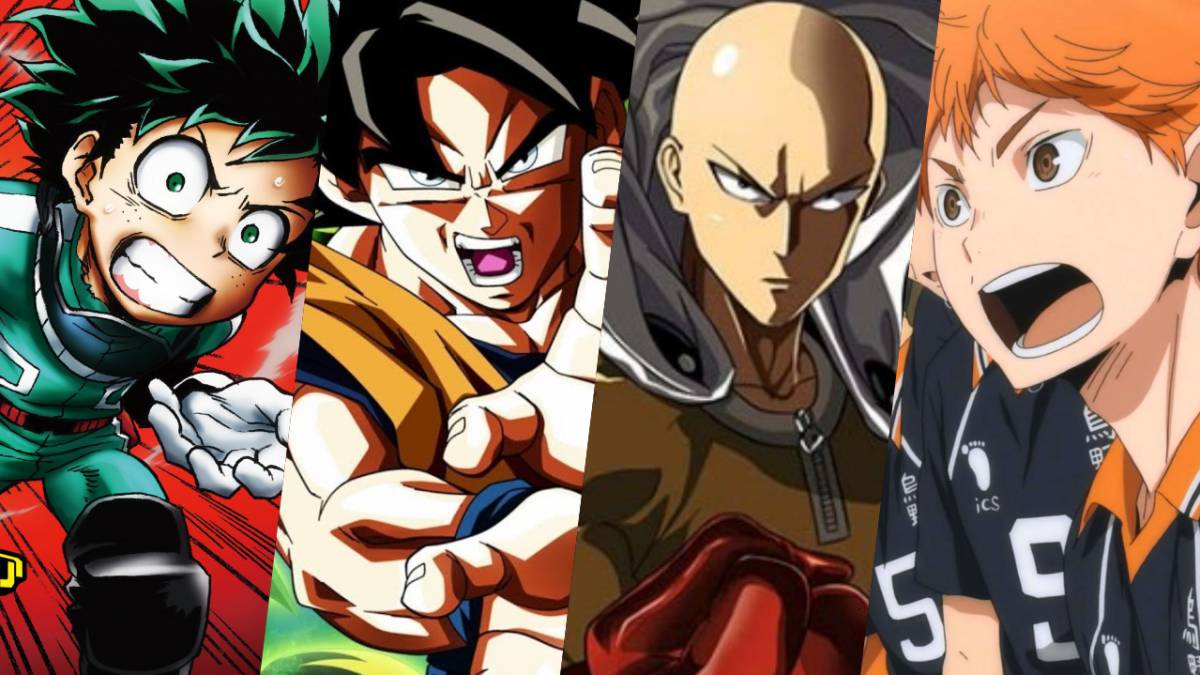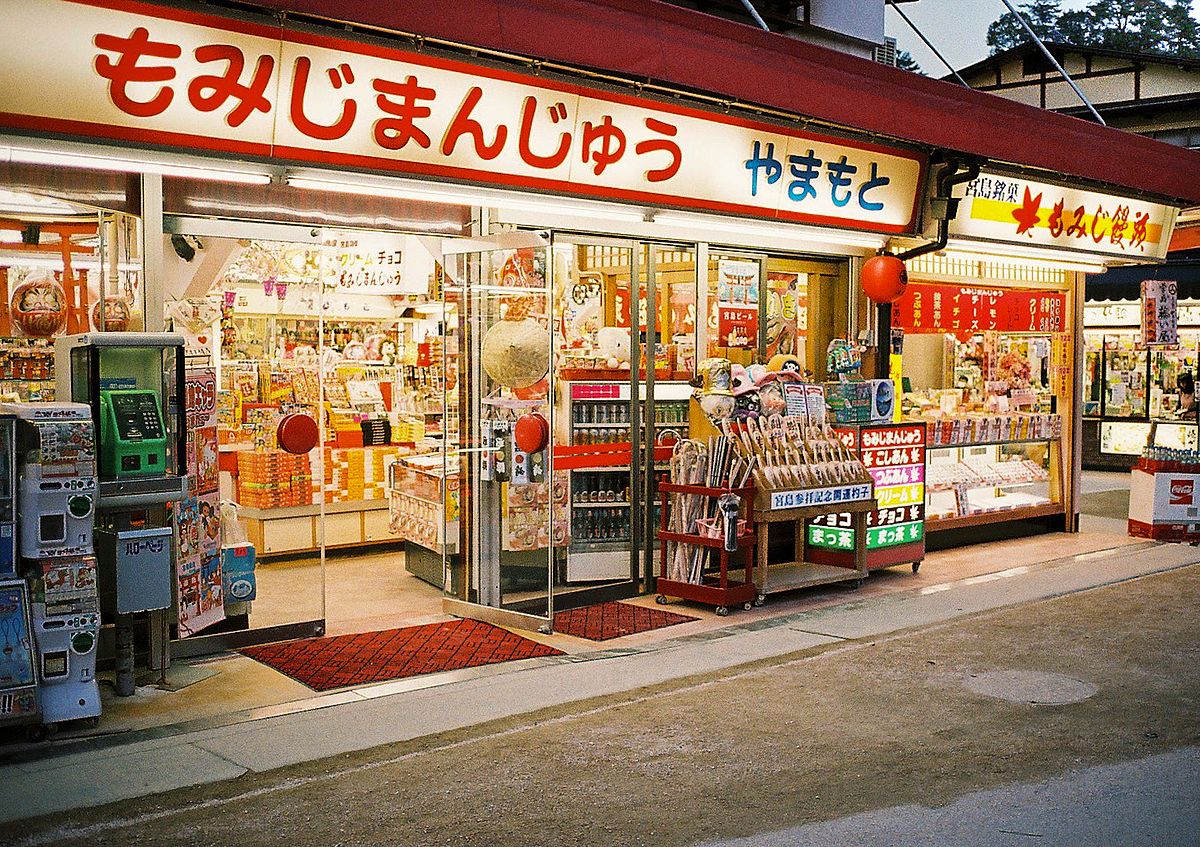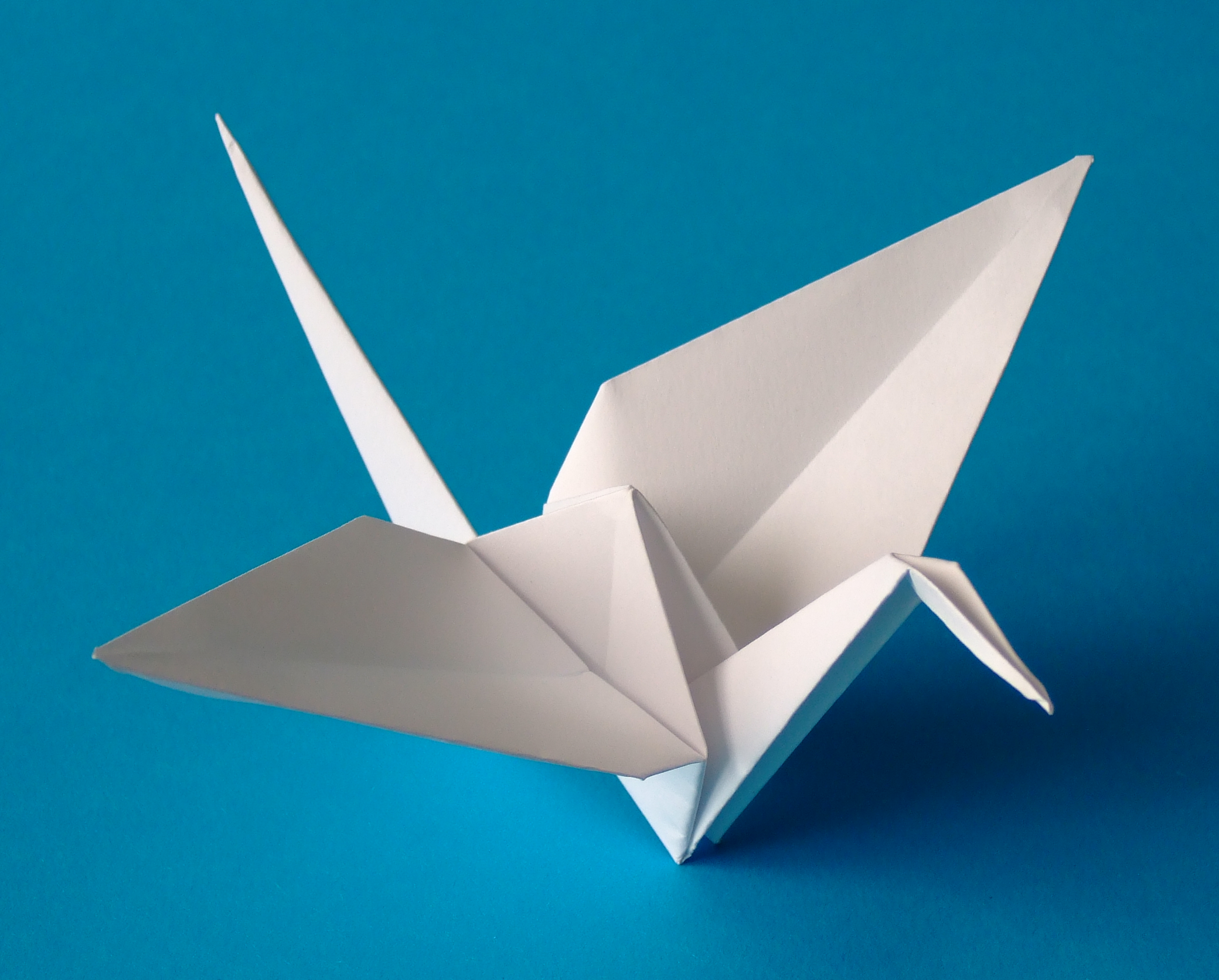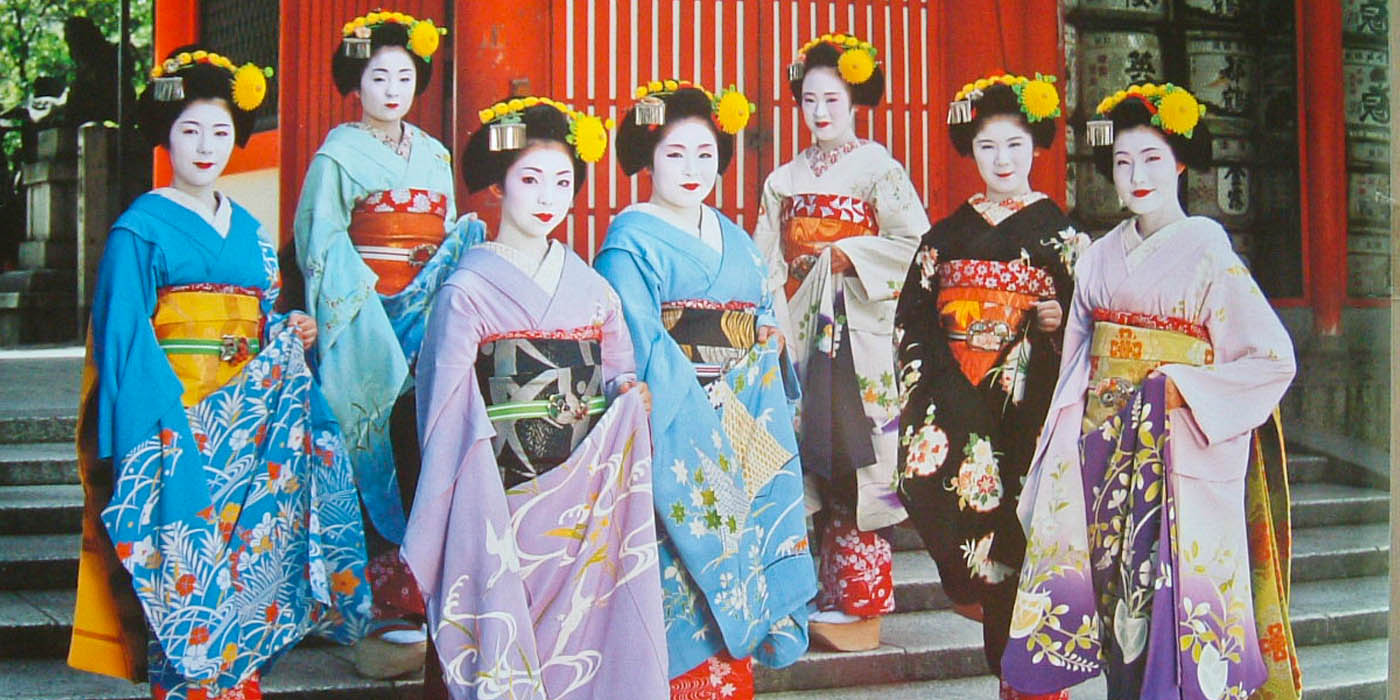From the Jomon culture originating in the archipelago, through the continental influence from Korea and China, after a long period of isolation under the Tokugawa shogunate until the arrival of the "Black Ships" and the Meiji era, the Japanese culture it has changed until it totally differentiates itself from other Asian cultures.

Japanese culture
Japanese culture is the result of the various waves of immigration from the Asian mainland and the islands of the Pacific Ocean which was followed by a great cultural influence from China and then a long period of almost total isolation under the Tokugawa shogunate, also known as the Japanese shogunate. Edo, Tokugawa bakufu or, by its original Japanese name, Edo bakufu, until the arrival of the Black Ships, which was the name given to the first Western ships to arrive in Japan.
The arrival of the so-called Black Ships, which occurred during the era of Emperor Meiji at the end of the XNUMXth century, brought with it a huge foreign cultural influence that increased even more after the end of World War II.
cultural history
Theories place the origin of the Japanese settlements between the tribes of Southwest Asia and the Siberian tribes given the similarities that the roots of Japanese culture present with both origins. The most probable thing is that the settlements come from both origins and that they have subsequently mixed.
The main evidence of this cultural beginning is the ceramic bands belonging to the Jomon culture that took root in the archipelago between 14500 BC and 300 BC. C. approximately. The Jomon people probably migrated to Japan from northeastern Siberia, and a small number of Austronesian peoples came to Japan from the south.
The Jomon period is followed by the Yayoi period, which covers approximately 300 BC to 250 AD. The first evidence of the first agricultural techniques (dry farming) correspond to this period. There is also genetic and linguistic evidence, according to some historians, that a group that arrived in this period came from the island of Java via Taiwan to the Ryukyu Islands and Japan.
The Yayoi period is followed by the Kofun period which extends from about 250 to 538. The Japanese term kofun refers to burial mounds dating from this period. During the Kofun period, both Chinese and Korean emigrants brought important innovations from rice cultivation to different techniques of house construction, pottery making, innovations in bronze smithing and the construction of burial mounds.
During the Yamato period the imperial court resided in what was then known as Yamato province, now known as Nara prefecture. During the reign of Prince Shotoku, a constitution based on the Chinese model was established. Later, during Yamato's rule, representatives were sent to the Chinese court, gaining experience in philosophy and social structure, the Chinese calendar, and the practice of different religions including Buddhism, Confucianism, and Taoism.
The Asuka period is the period in the history of Japanese culture that runs from the year 552 to the year 710, when the arrival of Buddhism generated a profound change in Japanese society and also marked the rule of Yamato. The Asuka period was characterized by great artistic, social and political changes that were generated mainly by the arrival of Buddhism. Also during this period the name of the country was changed from Wa to Nihon (Japan).
The Nara period begins when Empress Genmei established the capital of the country in the Heijō-kyō palace, in the current city of Nara. This period in the history of Japanese culture began in the year 710 and runs until the year 794. During this period, most of its inhabitants depended on agriculture for their livelihood and lived in villas. Much practiced the Shinto religion.
However, Nara, the capital city, became a copy of the city of Chang'an, the capital of China during the Tang dynasty. Chinese culture was assimilated by Japanese high society and the use of Chinese characters in Japanese writing was adopted, which would eventually become Japanese ideograms, the current kanji, and Buddhism was established as the religion of Japan.
The Heian period is considered the last period of the classical era in the history of Japanese culture, covering from the year 794 to the year 1185. During this period the capital moved to the city of Kyoto. Confucianism and other influences reached their peak during this period. In this period it is considered that the Japanese imperial court reached its highest point, standing out for the level reached by art, especially poetry and literature. Heian in Japanese means "peace and tranquility".
After the Heian period there was a time when the country was torn apart by repeated civil wars, making the sword rule. The bushi later known as samurai became the most important class. In addition to the development of the art of war and blacksmithing, Zen emerged as a new form of Buddhism that was quickly adopted by warriors.
The country returned to rest in the Edo period in the XNUMXth century under the rule of the Tokugawa clan. The Edo period is named after the name of the capital at the time, Edo (now Tokyo). The samurai became a type of official who retained his privileges in the martial arts. Zen Buddhism extended its influence into poetry, the art of gardening, and music.
The long period of peace caused an economic boom that helped the merchants, known as the fourth class. The artists, as they were denied social advancement, sought ways to surpass the samurai. Tea Houses were organized where the geishas officiated the Tea Ceremony, flower art, practiced music and dance. Kabuki theater, consisting of song, pantomime, and dance, was promoted.
Language and Writing
Both traditional Japanese culture and modern Japanese culture are based on written language and spoken language. Understanding the Japanese language is basic to understanding Japanese culture. Several languages are spoken in Japan, which are Japanese, Ainu and the Ryukyu family of languages, but Japanese is the one that is generally accepted in all the islands that make up the country, even to the extent that the other languages run endangered according to UNESCO.
Japanese is one of the most widely spoken languages in the world. In 1985, it was estimated that it was spoken by more than one hundred and twenty million people in Japan alone. For the 2009 census, it was spoken by more than one hundred and twenty-five million people. In addition to Japanese, the use of other languages such as Korean, Mandarin, English, Spanish and French is common in Japan.
The official language of Japan is Japanese and it is thought to have started during the Yayoi period. According to the evidence, the immigration corresponding to that period originated mainly from China and the Korean peninsula. The main cultures that influenced Japanese were Chinese, Korean, Siberian, and Mongolian.
The origin of the Japanese language is mostly independent. Even so, its grammatical structure typologically corresponds to the Altaic languages (Turkic languages, Mongolic languages and Tungusic languages, Japonic languages and Korean languages) due to the agglutination and word order, however its phonetic structure is more similar to the languages austronesian.
The Japanese language has many similarities with the Korean language in terms of grammatical structure formation but almost no similarities in terms of vocabulary except for some agricultural terms or terms imported from the Chinese language. This is why it is so difficult to assign the Japanese language to one of the larger language groups.
Chinese characters (kanjis) are used in the Japanese writing system, and two derived syllables (Kana), Hiragana (for indigenous vocabulary) and Katakana (for new loan words). With the hyphen, many Chinese terms were also adopted into Japanese. The main difference between the Chinese language and the Japanese language is the pronunciation and grammar of the terms, Japanese is not, like Chinese, a tonal language, in addition to having much fewer consonants.
The Japanese language has around one hundred and fifty syllables while the Chinese language has around sixteen hundred syllables. While grammatically Chinese has an isolating linguistic structure, Japanese is a language of agglutination, with a large number of grammatical suffixes and functional nouns that have a function comparable to the inflections, prepositions and conjunctions of European languages.
Japanese writing comprises three classical writing systems and one transcription system: Kana, syllabaries (Hiragana syllabary for words of Japanese origin and Katakana syllabary used mainly for words of foreign origin). Kanji characters of Chinese origin. Rómaji representation of Japanese with the Latin alphabet.
Hiragana was created by aristocratic women and katakana by Buddhist monks, so even today hiragana is considered a feminine and even children's writing system. Katakana is used to phonetically write words of foreign origin, especially names of people and geographical places. It is also used to write onomatopoeia and when you want to emphasize, just as in the West, only capital letters are used to attract attention.
Hiragana is combined with kanji as part of Japanese grammar. Japanese has adopted many foreign language words mainly from English, also some from Spanish and Portuguese from when the Spanish and Portuguese missionaries first came to Japan. For example, カッパ (kappa, layer) and maybe also パン (bread).
In Japanese writing, the Roman alphabet is used, giving it the name of romaji. It is mainly used to write names of trademarks or companies, also to write internationally recognized acronyms. There are different romanization systems, of which the best known is the Hepburn system, which is the most widely accepted, although the Kunrei shiki is the official one in Japan.
Shodo is Japanese calligraphy. It is taught as one more subject to children in primary education, however it is considered an art and a very difficult discipline to perfect. It comes from Chinese calligraphy and is generally practiced in the ancient way, with a brush, an inkwell with prepared Chinese ink, a paperweight and a sheet of rice paper. Currently, the fudepen is used, which is a Japanese-invented brush with an ink tank.
Currently there are expert calligraphers who provide their services for the drafting and preparation of important documents. In addition to requiring great precision and grace on the part of the calligrapher, each kanji character must be written in a specific stroke order, which increases the discipline required of those who practice this art.
japanese folklore
Japanese folklore was influenced by the country's main religions, Shinto and Buddhism. It is often related to comic or supernatural situations or characters. There are many unnatural characters typical of Japanese culture: Bodhisattva, Kami (spiritual entities), youkai (supernatural creature), yurei (ghosts of the dead), dragons, animals with supernatural abilities. : kitsune (foxes), tanuki (raccoon dogs), mudzilla (badger), bakeneko (monster cat), and baku (spirit).
Within Japanese culture, folk stories can be of various categories: mukashibanashi – legends about the events of the past; namida banasi – sad stories; obakebanasi – stories about werewolves; onga sibasi – stories about gratitude; tonti banasi – witty stories; varies banashi – humorous; and okubaribanasi – stories about greed. They also refer to Yukari folklore and other Ainu oral traditions and epics.
The most famous legends in Japanese culture include: The story of Kintaro, the golden boy with supernatural powers; the story of devastating demons like the Momotaro; the story of Urashima Taro, who saved the turtle and visited the bottom of the sea; the story of Issun Boshi, a boy the size of a little devil; the story of Tokoyo, a girl who restored honor to her samurai father; Bumbuku stories, the story of the tanuki, who takes the form of a teapot; the story of the fox Tamomo or Mahe;
Other memorable stories are: Shita-kiri Suzume, tells the story of a sparrow, which had no language; the story of the vengeful Kiyohime, who turned into a dragon; Banto Sarayasiki, a love story and nine Okiku dishes; Yotsuya Kaidan, the story of the ghost of Oiva; Hanasaka Dziy is the story of an old man who made withered trees flourish; the story of old Taketori is the story of a mysterious girl named Kaguya Hime, who came from the capital of the moon.
Japanese folklore was heavily influenced by both foreign literature and the ancestor and spirit worship that spread throughout ancient Asia. Many stories that came to Japan from India were deeply modified and adapted to the style of Japanese culture. The Indian epic Ramayana had a marked influence on many of the Japanese legends as well as the classic of Chinese literature "Pilgrimage to the West".
Japanese art
Japanese culture has a wide variety of media and styles of artistic expression, including ceramics, sculpture, varnishes, watercolors and calligraphy on silk and paper, woodblock prints, and ukiyo-e, kiri-e, kirigami, origami prints, as well such as, aimed at the younger population: manga – modern Japanese comics and many other types of artwork. The history of art in Japanese culture spans a huge period of time, from the earliest Japanese speakers, ten millennia BC to the present day.
Painting
Painting is one of the oldest and most refined forms of art in Japanese culture, characterized by its large number of genres and styles. Nature occupies a very important place both in painting and in literature within Japanese culture, highlighting its representation as the bearer of the divine principle. Also very important is the representation of images of scenes of daily life, generally full of detailed figures.
Ancient Japan and Asuka period
Painting originated in the prehistory of Japanese culture. There are samples of representations of simple figures, botanical, architectural and geometric designs in ceramics corresponding to the jomon period and bronze bells of the dutaku style corresponding to the Yayoi style. Dated to the Kofun period and Asuka period (300–700 AD) wall paintings of geometric and figurative design have been found in many burial mounds.
Nara period
The arrival of Buddhism in Japan during the XNUMXth and XNUMXth centuries brought about a flourishing of religious painting that was used to decorate the large number of temples erected by the aristocracy, but the most important contribution of this period of Japanese culture was not in painting. but in sculpture. The main surviving paintings from this period are murals found on the inner walls of Horyu-ji Temple in Nara Prefecture. These murals include stories about the life of Shakyamuni Buddha.
Heian Period
During this period, paintings and representations of mandalas stand out due to the development of Shingon and Tendai Shu sects during the XNUMXth and XNUMXth centuries. A large number of versions of mandalas were made, especially those of the World of Diamonds and Mandala of the Womb that were represented on scrolls and murals on the walls of the temples.
The Mandala of Two Worlds consists of two scrolls adorned with paintings from the Heian period, an example of this mandala is found in the pagoda of the Buddhist temple of Daigo ji, which is a two-story religious building located in southern Kyoto, despite that some details are partially damaged due to the normal deterioration of time.
Kamakura period
The Kamakura Period was mainly characterized by the development of sculpture, the paintings of this period being especially of a religious nature and their authors are anonymous.
Muromachi period
The development of Zen monasteries in the cities of Kamakura and Kyoto had a great influence on the visual arts. A restrained monochrome style of ink painting called Suibokuga or Sumi imported from the Chinese Song and Yuan dynasty arose, replacing the polychrome scroll paintings of earlier periods. The ruling Ashikaga family sponsored monochrome landscape painting in the late XNUMXth century, making it a favorite of Zen painters and gradually evolving into a more Japanese style.
Landscape painting also developed Shigaku, scroll painting, and poems. In this period, the priest painters Shubun and Sesshu stood out. From the Zen monasteries, ink painting moved to art in general, assuming a more plastic style and decorative intentions that are maintained until modern times.
Azuchi Momoyama period
Azuchi Momoyama period painting contrasts sharply with Muromachi period painting. In this period polychrome painting stands out with the widespread use of gold and silver sheets that are applied to paintings, clothing, architecture, large-scale works and others. Monumental landscapes were painted on the ceilings, walls and sliding doors that separated the rooms in the castles and palaces of the military nobility. This style was developed by the prestigious Kano school whose founder was Aitoku Kano.
Other currents that adapted Chinese themes to Japanese materials and aesthetics also developed in this period. An important group was the Tosa school, which developed primarily from the yamato tradition, and was known primarily for small-scale works and illustrations of literary classics in book or emaki format.
Edo Period
Although trends from the Azuchi Momoyama period remained popular in this period, different trends also emerged. The Rimpa school emerged, depicting classical themes in a bold or lavishly decorative format.
During this period, the namban genre, which used exotic foreign styles in painting, was fully developed. This style focused on the port of Nagasaki, the only port that remained open to foreign trade after the beginning of the Tokugawa shogunate's national policy of isolation, thus being the gateway to Japan for Chinese and European influences.
Also in the Edo period, the Bunjinga genre, literary painting, known as the Nanga school emerged, which imitated the works of Chinese amateur scholar painters of the Yuan dynasty.
These luxurious goods were limited to high society and not only were not available but were expressly prohibited for the lower classes. Ordinary people developed a separate type of art, kokuga fu, where the art first addressed the subjects of everyday life: the world of teahouses, Kabuki theater, sumo wrestlers. Wood engravings appeared that represented the democratization of culture since they were characterized by high circulation and low cost.
After domestic painting, printmaking became known as ukiyo-e. The development of printmaking is associated with the artist Hishikawa Moronobu who depicted simple scenes of everyday life with unrelated events on the same print.
Meiji period
During the second half of the 1880th century, the government organized a process of Europeanization and modernization that caused great political and social changes. The government officially promoted the Western style of painting, sent young artists with potential to study abroad, and foreign artists came to Japan to study art. However, a revival of the traditional Japanese style occurred and by XNUMX, the Western style of art was banned from official exhibitions and was the subject of harsh contrary opinions from critics.
Supported by Okakura and Fenollosa, the Nihonga style evolved with influences from the European Pre-Raphaelite movement and European Romanticism. Yoga style painters organized their own exhibitions and promoted interest in Western art.
However, after an initial surge of interest in the Western style of art, the pendulum swung in the opposite direction, bringing about a revival of the traditional Japanese style. In 1880, the Western style of art was banned from official exhibitions and came under harsh criticism.
Taisho period
After Emperor Mutsuhito's death and Crown Prince Yoshihito's accession to the throne in 1912, the Taisho period began. The painting in this period received a new impulse, although the traditional genres continued to exist, this received a great influence from the West. In addition, many young artists were carried away by impressionism, post-impressionism, cubism, fauvism and other artistic movements that develop in Western countries.
postwar period
After World War II, painters, engravers and calligraphers abounded in the big cities, especially in the city of Tokyo, and they were concerned with reflecting urban life with their blinking lights, neon colors and frenetic pace. The trends of the art world of New York and Paris were fervently followed. After the abstractions of the XNUMXs, the “Op” and “Pop” art movements brought about a revival of realism in the XNUMXs.
Avant-garde artists worked for and won numerous awards both in Japan and internationally. Many of these artists felt that they strayed from the Japanese. At the end of the XNUMXs, numerous artists abandoned what they classified as “empty Western formulas”. Contemporary painting without abandoning the modern language returned to the conscious use of the forms, materials and ideology of traditional Japanese art.
Literature
Japanese-language literature covers a period of almost a millennium and a half, ranging from the Kojiki chronicle of the year 712, which narrates the oldest mythological legends of Japan, to contemporary authors. It was in its early stages that it was most influenced by Chinese literature and was often written in the classical Chinese language. Chinese influence was felt to varying degrees until the Edo period, diminishing significantly in the XNUMXth century, when Japanese culture had more exchange with European literature.
Ancient period (Nara, until the year 894)
With the arrival of Kanji, Japanese language characters acquired from Chinese characters, gave birth to the writing system within Japanese culture since previously there was no formal writing system. These Chinese characters were adapted for use in the Japanese language, creating the Man'yōgana which is considered to be the first form of kana, Japanese syllabic script.
Before there was literature, during the Nara period, a large number of ballads, ritual prayers, myths and legends were composed, which were later collected in writing and included in various works, including the Kojiki, Nihonshoki of the year 720, a chronicle with more historical depth and Man'yōshū of the year 759, a poetic anthology compiled by Otomo in Yakamochi, the most important poet being including Kakimoto Hitomaro.
Classical period (894 to 1194, the Heian period)
Within Japanese culture, the Heian period is considered the golden age of Japanese literature and art in general. During this period the imperial court gave decisive support to the poets by issuing numerous editions of poetic anthologies, since the vast majority of the poets were courtiers and the poetry was elegant and sophisticated.
The poet Ki Tsurayuki in the year nine hundred and five put together an anthology of ancient and modern poetry (Kokin Siu) in whose preface he established the foundations for Japanese poetics. This poet was also the author of a Nikki that is considered the first example of a very important genre in Japanese culture: the diary.
The work Genji Monogatari (The Legend of Genji) by the writer Murasaki Shikibu is considered by many to be the first novel in history, written around the year one thousand, it is the capital work of Japanese literature. The novel is filled with rich portraits of Japan's refined culture of the Heian period, mixed with sharp visions of the world's transience.
Other important works from this period include Kokin Wakashu written in XNUMX, an anthology of Waka poetry, and XNUMX's "The Book of Pillows" (Makura no Sōshi), the second of which was written by Sei Shonagon. , contemporary and rival of Murasaki Shikibu.
Pre-modern period (1600 to 1868)
The peaceful environment that existed during almost the entire Edo period allowed the development of literature. In this period, the middle and working classes grew in the city of Edo (now Tokyo), which led to the appearance and development of popular drama forms that later became kabuki, a form of Japanese theater. The playwright Chikamatsu Monzaemon, a writer of kabuki dramas, became popular during the XNUMXth century, joruri, Japanese puppet theater, also became famous at that time.
Matsuo Basho, the most famous Japanese poet of the time, wrote “Oku in Hosomichi” in XNUMX in his travel diary. Hokusai, one of the most famous ukiyo-e artists, illustrates fictional works in addition to his famous "Thirty-six Views of Mount Fuji."
During the Edo period, a totally different literature emerged from that of the Heian period, with worldly and bawdy prose. Ihara Saikaku with his work "The Man Who Spent His Life Making Love" became the most prominent writer of the time, his prose being widely imitated. “Hizaki Rige” was a very famous picaresque play by Jippensha Ikku.
Haiku are seventeen-syllable verses influenced by Zen Buddhism that were improved during the Edo period. During this period there were three poets who excelled in this type of verse: the Zen beggar monk Basho, considered the greatest of Japanese poets because of his sensitivity and depth; Yosa Buson, whose haikus express his experience as a painter, and Kobayashi Issa. Comic poetry, in a variety of forms, also influenced this period.
Contemporary literature (1868-1945)
The period after the fall of the shogun and the return to power of the empire was characterized by the growing influence of European ideas. In literature, the numerous translated and original works denoted the fervent desire to reform and catch up with European literary trends. Fukuzawa Yukichi author of "The State of the West" was one of the renowned authors who promoted European ideas.
The renewal of national art was expressed mainly as a reaction against the artificiality, implausibility and bad taste of the previous favorites of the public. Expert in European history and literature, author of progressive novels Sudo Nansui wrote the novel "Ladies of a New Kind" depicts a picture of Japan in the future at the peak of cultural development.
The prolific and popular author Ozaki Koyo in his work "Many Feelings, Much Pain" uses a spoken Japanese language where the influence of the English language is noticeable.
Using European poetry styles as a model, efforts were made at the turn of the century to abandon the monotony of the tanka and create a new style of poetry. University of Tokyo professors Toyama Masakazu, Yabte Ryokichi, and Inoue Tetsujiro jointly published “New Style Anthology” where they promote new forms of nagauta (long poems) written in ordinary language without using inappropriate Old Japanese to express new ideas and feelings.
The European influence on the themes and the general character of the poetry of this time is evident. Vain attempts were made to rhyme in the Japanese language. Romanticism in Japanese literature appeared with Mori Ogaya's "Anthology of Translated Poems" in 1889) and reached its apogee in the works of Toson Shimazaki and other authors published in the magazines "Myojo" (Morning Star) and " Bungaku Kai » in the early 1900s.
The first naturalistic works to be published were Toson Shimazaki's "Deteriorated Testament" and "Cama" Tayama Kataja. The latter laid the groundwork for a new genre of Watakushi Shosetsu (Romance of the Ego): the writers move away from social issues and portray their own psychological states. As the antithesis of naturalism, it arose in neo-romanticism in the works of the writers Kafu Nagai, Junichiro Tanizaki, Kotaro Takamura, Hakushu Kitahara, and was developed in the works of Saneatsu Mushanokoji, Naoi Sigi, and others.
Works by several novel authors were published during the war in Japan, including Junichiro Tanizaki and Japan's first Nobel Prize winner for literature, Yasunari Kawabata, a master of psychological fiction. Ashihei Hino wrote lyrical works where he glorified war, while Tatsuzo Ishikawa anxiously watched the offensive in Nanjing and Kuroshima Denji, Kaneko Mitsuharu, Hideo Oguma and Jun Ishikawa opposed the war.
Post-war literature (1945 – Present)
Japan's literature was deeply affected by the country's defeat in World War II. The authors addressed the issue expressing discontent, bewilderment and humility in the face of defeat. Leading writers of the 1964s and XNUMXs focused on intellectual and moral issues in their attempts to raise the level of social and political consciousness. In particular, Kenzaburo Oe wrote his most famous work, "Personal Experience," in XNUMX, and became Japan's second Nobel Prize for Literature.
Mitsuaki Inoue wrote about the problems of the nuclear age in the XNUMXs, while Shusaku Endo spoke about the religious dilemma of Catholics in feudal Japan as the basis for solving spiritual problems. Yasushi Inoue also turned to the past, masterfully portraying human destinies in historical novels about Inner Asia and ancient Japan.
Yoshikiti Furui wrote about the difficulties of urban residents, forced to deal with the minutiae of everyday life. In 88, Shizuko Todo was awarded the Sanjugo Naoki Award for "Summer of Maturation," a story about the psychology of a modern woman. Kazuo Ishiguro, British Japanese, achieved international fame and was the winner of the prestigious Booker Prize for his novel "Remains of the Day" in 1989 and the Nobel Prize for Literature in 2017.
Banana Yoshimoto (pseudonym of Mahoko Yoshimoto) has caused much controversy for her manga-like writing style, especially at the beginning of her creative career in the late 1980s, until she was recognized as an original and talented author. Her style is the predominance of dialogue over description, which resembles a manga setting; Her works focus on love, friendship and the bitterness of loss.
Manga has become so popular that it accounts for XNUMX to XNUMX percent of print publications during the XNUMXs with sales exceeding XNUMX billion yen a year.
Mobile literature written for mobile phone users appeared in the early 2007st century. Some of these works, such as Koizora (Sky of Love), sell in millions of copies in print, and by the end of XNUMX, "moving novels" entered the top five science fiction sellers.
Performing Arts
Theater is an important part of Japanese culture. There are four types of theater in Japanese culture: noh, kyogen, kabuki, and bunraku. Noh arose from the union of sarugaku (Japanese popular theater) with the music and dance of the Japanese actor, author and musician Kanami and a Japanese beautician, actor and playwright Zeami Motokiyo, it was characterized by masks, costumes and stylized gestures.
Kyogen is a comedic form of traditional Japanese theater. It was a form of entertainment imported from China in the XNUMXth century. It is a popular comedy drama genre that developed from the comedic elements of sarugaku performances and developed by the XNUMXth century.
Kabuki is a synthesis of song, music, dance and drama. Kabuki performers use complex makeup and costumes that are highly symbolic. Bunraku is the traditional Japanese puppet theater.
Daily Japanese Culture
Although heavily influenced by Western culture today, daily life in Japan has cultural peculiarities that are only found there.
Clothing
The particularity of clothing in Japanese culture distinguishes it from all clothing in the rest of the world. In modern Japan you can find two ways of dressing, the traditional or wafuku and the modern or yofuku, which is the everyday trend and generally adopts the European style.
The traditional Japanese clothing is the kimono which literally means "thing to wear". Originally, kimono referred to all kinds of clothing, currently it refers to the suit also called "naga gi" which means long suit.
The kimono is used on special occasions by women, men and children. There is a wide variety of colors, styles and sizes. Generally men wear dark colors while women opt for lighter and brighter colors, especially younger women.
The tomesode is the kimono of married women, it is distinguished by not having a pattern above the waist, the furisode corresponds to single women and is recognized by its extremely long sleeves. The seasons of the year also influence the kimono. Bright colors with embroidered flowers are the ones used in spring. Less bright colors are used in the fall. In winter, flannel kimonos are used since this material is heavier and helps keep you warm.
The uchikake is the silk kimono used in wedding ceremonies, they are very elegant and are usually decorated with flower or bird designs with silver and gold threads. Kimonos are not made to specific sizes like Western garments, sizes are only approximate and special techniques are used to properly fit the body.
The obi is a decorative and very important garment in the kimono worn by both Japanese men and women. Women usually wear a large and elaborate obi while the men's obi is slim and understated.
The keikogi (keiko is training, gi is suit) is the Japanese training suit. It differs from the kimono in that it includes pants, it is the suit used to practice martial arts.
The hakama is long pants with seven pleats, five in the front and two in the back, whose original function was to protect the legs, which is why they were made with thick fabrics. Later it became a status symbol being used by the samurai and made with finer fabrics. It took its current form during the Edo period and from then on it is used by both men and women.
Currently the hakama called joba hakama is used, generally used as part of the kimono in special celebrations. It is also used by the highest ranking practitioners of martial arts practitioners of iaido, kendo, aikido. There are differences in the use according to the martial art, while in iaido and kendo the knot is used in the back, in aikido it is used in front.
Yukata (swimwear) is a casual summer kimono made of cotton, linen or hemp without lining. Despite the meaning of the word, the use of yukata is not limited to wearing after a bath and is common in Japan during the hot summer months (starting in July), being worn by both men and women of all ages. .
Tabi are traditional Japanese socks worn by men and women with zori, geta or other traditional shoes. These socks have the peculiarity that the thumb is separated. They are commonly used with kimono and are generally white in color. Men also use the color black or blue. Construction workers, farmers, gardeners, and others wear another type of tabi called a jika tabi, which is made of sturdier materials and often has rubber soles.
Geta are sandals typical of Japanese culture, consisting of a main platform (dai) that rests on two transverse blocks (ha) that are generally made of wood. Nowadays it is used during rest or in very hot weather.
Zori is a kind of Japanese national footwear, an attribute of the national ceremonial dress. They are flat sandals without a heel, with a thickening towards the heel. They are held on the legs by straps that pass between the thumb and second toe. Unlike geta, zori is done separately for the right and left feet. They are made from rice straw or other plant fibers, cloth, lacquered wood, leather, rubber, or synthetic materials. Zori are very similar to flip flops.
Japanese cuisine
Cuisine within Japanese culture is known for its emphasis on seasonality, quality of ingredients, and presentation. The basis of the country's cuisine is rice. The word gohan which literally means cooked rice can also be translated as "food". In addition to its main purpose as food, rice was also used in the old days as a kind of currency, being used for the payment of taxes and salaries. Since rice was so valuable as a means of payment, the farmers ate mainly millet.
The Japanese use rice to prepare a wide and varied number of dishes, sauces and even drinks (sake, shochu, bakushu). Rice is always present in the food. Until the XNUMXth century, only the rich ate rice, since its price made it prohibitive for those with lower incomes, so they replaced it with barley. It was not until the XNUMXth century that rice became generally available to everyone.
Fish is the second most important Japanese food. Japan ranks fourth in the world in per capita consumption of fish and shellfish. Fish is often eaten raw or undercooked, like sushi. Noodle dishes made from wheat such as the thick noodle known as udon or buckwheat (soba) are popular. Noodles are used in soups, and as an independent dish, with additives and seasonings. An important place in Japanese cuisine is soybeans. Soups, sauces, tofu, tofu, natto (fermented soybeans) are made with it.
Foods are often salted, fermented, or pickled to preserve foods in high-moisture conditions, examples of which include natto, umeboshi, tsukemono, and soy sauce. In modern Japanese cuisine, you can easily find elements of Chinese, Korean and Thai cuisine. Some borrowed dishes like ramen (Chinese wheat noodles) are becoming very popular.
The rules of etiquette at the table in Japanese culture are different from those in the West. They usually eat from porcelain cups with hashi chopsticks. Liquid food is usually drunk from bowls, but spoons are sometimes used. A knife and fork are used exclusively for European dishes.
Over time, the Japanese have managed to develop a sophisticated and refined cuisine. In recent years, Japanese food has caught on and become very popular in many parts of the world. Dishes like sushi, tempura, noodles and teriyaki are some of the foods that are already common in America, Europe and the rest of the world.
The Japanese have many different soups, but the most traditional is misoshiru. This is a soup made from miso paste (which is made from boiled, crushed and fermented soybeans with the addition of salt and malt). These soups are prepared differently in each region. In addition, the Japanese widely use vegetables and herbs (potatoes, carrots, cabbage, horseradish, dill, celery, parsley, tomatoes, onions, apples, Japanese radish), fish, shark meat, seaweed, chicken, squid, crabs and others. seafood.
Green tea is a traditional and popular drink for the Japanese, and sake and shochu rice wine. A special place in traditional Japanese cuisine is occupied by the Japanese tea ceremony. Recently, Japanese cuisine has been quite popular outside of Japan, and due to its low calorie content, it is considered healthy.
Music
Japanese music includes a wide variety of genres, ranging from traditional and particular to Japan itself to many modern music genres, around which a distinctive scene is often built in the country, unlike in other countries. The Japanese music market in 2008 was the second largest in the world after the US. The term "music" (ongaku) consists of two characters: sound (it) and comfort, entertainment (gaku).
Japanese music in Japan uses the terms "Hogaku" (peasant music), "wagaku" (Japanese music), or "kokugaku" (national music). In addition to traditional instruments and genres, Japanese music is also known for unusual instruments such as Suikinkutsu (singing wells) and Suzu (singing bowls). Another difference is that traditional Japanese music is based on the intervals of human breathing and not on mathematical counting.
Shamisen (literally "three strings"), also known as a sangen, is a Japanese stringed instrument that is played by a plectrum called a batey. It originated from the Chinese string instrument sanxian. It entered Japan through the Ryukyu Kingdom in the XNUMXth century, where it gradually became the sanshin instrument of Okinawa. The shamisen is one of the most popular Japanese instruments due to its distinctive sound and has been used by musicians such as Marty Friedman, Miyavi and others.
The koto is a Japanese stringed instrument similar to the Vietnamese danchanyu, the Korean gayageum, and the Chinese guzheng. It is thought to derive from the latter after it came to Japan from China in the XNUMXth or XNUMXth century.
Fue (flute, whistle) is a family of Japanese flutes. Fues are generally sharp and made of bamboo. The most popular was the shakuhachi. Flutes appeared in Japan in the XNUMXth century, disseminated during the Nara period. The modern flute can be both a solo and orchestral instrument.
Since the 1990s, Japanese music has been widely recognized and popular in the West, mainly due to its unique genres such as j-pop, j-rock, and visual kei. Such music often reaches Western listeners through soundtracks in anime or video games. The popular music scene of modern Japan includes a wide range of singers, whose interests range from Japanese rock to Japanese salsa, from Japanese tango to Japanese country.
Karaoke, the well-known form of amateur singing performance in a musical that takes place in bars and small clubs, has its origin precisely in Japan.
Movies
Early Japanese films in the late XNUMXth and early XNUMXth centuries had a simple plot, developed under the influence of theater, their actors were stage performers, male actors played female roles, and theater costumes and sets were used. Before the advent of sound films, the demonstration of films was accompanied by benshi (commentator, narrator, or translator), a live performer, a Japanese version of the Parlor Pianist (taper).
Thanks to urbanization and the rise of popular Japanese culture, the film industry grew rapidly in the late XNUMXs, producing more than ten thousand films between that time and the beginning of World War II. The banal era of Japanese cinema ended after the earthquake in Kantó, from that moment the cinema began to address social problems such as the situation of the middle class, the working class and women, it also accommodated historical dramas and the Romance.
The XNUMXs and XNUMXs saw the active development of Japanese cinema, they are considered its "golden age". In the fifties, two hundred and fifteen films were released, and in the sixties - as many as five hundred and forty-seven films. During this period, the genres of historical, political, action and science fiction films appeared; in the number of released films, Japan ranked one of the first places in the world.
The famous filmmakers of this period are Akira Kurosawa, who made his first works in the XNUMXs and in the XNUMXs he won the Silver Lion at the Venice International Film Festival with Rashōmon. The seven samurai.; Kenji Mizoguchi also won the Golden Lion for his most important work Tales of the Pale Moon.
Other directors are Shohei Imamura, Nobuo Nakagawa, Hideo Gosha and Yasujirō Ozu. Actor Toshiro Mifune, who had a part in almost all of Kurosawa's films, became famous outside the country.
With the popularization of television in the XNUMXs, the cinema audience decreased considerably, the expensive productions were replaced by gangster films (yakuza), teen films, science fiction and low-cost pornographic films.
Anime and manga
Anime is Japanese animation that, unlike the cartoons of other countries that are mainly dedicated to children, are aimed at adolescent and adult audiences, which is why they have become very popular around the world. Anime is distinguished by a characteristic way of depicting characters and backgrounds. Published in the form of television series, as well as films distributed in video media or intended for cinematographic projection.
Plots can describe many characters, differ in a variety of places and times, genres, and styles, and often come from manga (Japanese comics), ranobe (Japanese light novel), or computer games. Other sources such as classical literature are used less frequently. There are also totally original animes that in turn can generate manga or book versions.
Manga are Japanese comics also occasionally called komikku. Although it developed after World War II strongly influenced by Western traditions. The manga has deep roots in the original Japanese culture. The manga is aimed at people of all ages and is respected as a visual art form and a literary phenomenon, which is why there are many genres and many topics that cover adventure, romance, sports, history, humor, science fiction, horror. , erotica, business and others.
Since the 2006s, manga has become one of the biggest branches of Japanese book publishing, with a turnover of 2009 billion yen in 2006 and XNUMX billion yen in XNUMX. it has become popular in the rest of the world, especially in the United States, where the sales data for the year XNUMX were between one hundred seventy-five and two hundred million dollars.
Almost all manga are drawn and published in black and white, although there are also color ones, for example Colorful, a Japanese animated film directed by Keiichi Hara. Manga that becomes popular, often long manga series, is filmed in anime, and light novels, video games, and other derivative works can also be created.
Creating an anime based on an existing manga makes sense from a business point of view: drawing a manga is generally less expensive, and animation studios have the ability to determine if a particular manga is popular so that it can be filmed. When manga are adapted to movies or anime, they generally undergo some adaptations: fight and battle scenes are softened and overly explicit scenes are removed.
The artist who draws manga is called a mangaka, and is often the author of the script. If the script is written by an individual, that writer is called a gensakusha (or, more precisely, manga gensakusha). It is possible that a manga is created based on an existing anime or movie, for example, based on "Star Wars". However, anime and otaku culture would not have come about without a manga, because few producers are willing to invest time and money in a project that has not proven its popularity, paying off in the form of a comic strip.
Japanese garden
The garden has great importance in Japanese culture. The Japanese garden is a type of garden whose organizational principles developed in Japan between the XNUMXth and XNUMXth centuries. Started by the earliest Buddhist temple gardens or Shinto shrines, founded by Buddhist monks and pilgrims, the beautiful and complex Japanese garden art system gradually took shape.
In 794, the capital of Japan was moved from Nara to Kyoto. The first gardens seemed to be places for celebrations, games and open-air concerts. The gardens of this period are decorative. Many flowering trees (plum, cherry), azaleas, as well as a climbing wisteria plant were planted. However, in Japan there are also gardens without vegetation, made of stone and sand. In their artistic design, they resemble abstract painting.
In Japanese gardens it is about symbolizing the perfection of earthly nature and often the personification of the universe. Characteristic elements of its composition are artificial mountains and hills, islands, streams and waterfalls, paths and patches of sand or gravel, decorated with stones of unusual shapes. The landscape of the garden is made up of trees, shrubs, bamboo, grasses, beautiful flowering herbaceous plants and moss.
Ikebana
Ikebana, comes from the Japanese word "ike or ikeru" which means life and the Japanese word "Ban or Khan" flowers, that is literally "living flowers", and refers to the art of arranging cut flowers and buds in special containers, as well as the art of correctly placing these compositions in the interior. Ikebana is based on the principle of refined simplicity, achieved by revealing the natural beauty of the material.
For the realization of ikebana all the materials used must be of a strictly organic nature including branches, leaves, flowers or herbs. The components of ikebana must be arranged in a three-element system, usually forming a triangle. The longest branch is considered to be the most important and represents anything that approaches the sky, the shortest branch represents the earth and the intermediate one represents the human being.
Cha no yu, The Japanese Tea Ceremony
The cha no yu, known in the West as the Japanese tea ceremony, also known as Chado or Sado. It is a Japanese social and spiritual ritual. It is one of the best-known traditions of Japanese culture and Zen art. His ritual was compiled by the Zen Buddhist monk Sen no Rikyu and later by Toyotomi Hideyoshi. Sen no Rikyū's cha no yu continues the tradition established by Zen monks Murata Shuko and Takeno Joo.
The ceremony is based on the conception of wabi cha, which is characterized by the simplicity and sobriety of the rite and its close connection with Buddhist teachings. This ceremony and spiritual practice can be performed in different styles and in different ways. Originally appearing as one of the forms of meditation practice by Buddhist monks, it has become an integral part of Japanese culture, closely related to many other cultural phenomena.
Tea gatherings are classified as a chakai, an informal tea-picking gathering, and a chaji, a formal tea-drinking event. A chakai is a relatively simple act of hospitality that includes sweets, light tea, and perhaps a light meal. A chaji is a much more formal gathering, usually including a full meal (kaiseki) followed by sweets, thick tea, and fine tea. A chaji can last up to four hours.
Sakura or Cherry Blossom
The Japanese cherry blossom is one of the most important symbols of Japanese culture. It is synonymous with beauty, awakening and transience. The cherry blossom season marks a high point in the Japanese calendar and the beginning of spring. In Japan, the cherry blossom symbolizes clouds and metaphorically denotes the ephemerality of life. This second symbolic meaning is often associated with the influence of Buddhism, being the embodiment of the idea of mono no aware (sensitivity to the ephemerality of things).
The transience, extreme beauty and rapid death of flowers are often compared to human mortality. Thanks to this, the sakura flower is deeply symbolic in Japanese culture, its image is often used in Japanese art, anime, cinema and other areas. There is at least one popular song called sakura, as well as several j-pop songs. The depiction of sakura blossoms is found on all types of Japanese consumer products, including kimonos, stationery, and tableware.
In the Japanese culture of the samurai, the cherry blossom is also highly appreciated, since it is considered that the samurai has a short life just like the cherry blossom, in addition to the idea that the cherry blossoms represented drops of blood. shed by samurai during battles. Currently it is generally considered that the cherry blossom represents innocence, simplicity, the beauty of nature and the rebirth that comes with spring.
Religions in Japan
Religion in Japan is mainly represented by Buddhism and Shintoism. Most believers in Japan consider themselves both religions at once, indicating religious syncretism. In the late 1886th century, in 1947, during the Meiji Restoration, Shintoism was declared the sole and compulsory state religion of the Japanese state. After World War II, with the adoption of a new Japanese constitution in XNUMX, Shinto lost this status.
It is estimated that Buddhists and Shintoists constitute between eighty-four and ninety-six percent of the population, which represents a large number of believers in the syncretism of both religions. However, these estimates are based on the population that is associated with a particular temple, and not the number of true believers. Professor Robert Kisala suggests that only 30% of the population identify as believers.
Taoism imported from China, Confucianism, and Buddhism also influenced Japanese religious beliefs, traditions, and practices. Religion in Japan is prone to syncretism, resulting in a mixture of various religious practices. For example, adults and children celebrate Shinto rituals, schoolchildren pray before exams, young couples organize wedding ceremonies in a Christian church and funerals in a Buddhist temple.
Christians represent a religious minority, just over two percent of the population. Among Christian church associations operating on a common Japanese scale, the largest is the Catholic Central Council, followed in membership by Jehovah's Witnesses, Pentecostals, and members of the United Church of Christ in Japan. Since the middle of the century XIX, various religious sects such as Tenrikyo and Aum Shinrikyo have also emerged in Japan.
miyage
Miyage are Japanese souvenirs or Japanese souvenirs. In general, the miyage are foods that represent the specialties of each region or have the image of the visited site printed or on them. Miyage are considered a social obligation (giri) expected as a courtesy from a neighbor or work colleague after a trip, even a short trip, instead they are more spontaneous and are usually bought when returning from the trip.
For this reason, miyage are offered at any popular tourist destination, as well as train, bus, and airport stations in many varieties, and there are many more souvenir shops in these places in Japan than in comparable places in Europe. The most frequent and popular miyage are mochi, Japanese rice cakes made from sticky rice; Senbei, toasted rice crackers and filled crackers. At first the miyage were not food due to their perishability, but amulets or any other consecrated object.
During the Edo period, pilgrims received as a farewell gift from their community before starting their journey, sembetsu, consisting mainly of money. In exchange, the pilgrims, upon their return from the trip, brought back to their community a souvenir of the visited sanctuary, miyage, as a way of symbolically including those who stayed at home in their pilgrimage.
According to train specialist Yuichiro Suzuki, the increase in the speed of the trains was only allowed so that less durable miyage such as food could withstand the return trip without being damaged. At the same time, this led to the appearance of new regional specialties such as Abekawa mochi, which was originally a normal mochi, whose recipe was later replaced by gyuhi, with a higher sugar content that made it more resistant for long train journeys.
Onsen
Onsen is the name of hot springs in Japan, as well as often accompanying tourist infrastructure: hotels, inns, restaurants located near the source. There are more than two thousand hot springs to bathe in the volcanic country. Hot spring recreation has traditionally played a key role in Japanese domestic tourism.
Traditional onsen involves swimming in the open air. Many onsen have also recently been supplemented with indoor bathing facilities, there are also fully enclosed onsen, where hot water is usually supplied from a well. The latter differ from the sento (ordinary public baths) in that the water in the sento is not mineral, but ordinary, and is heated by a boiler.
Traditional onsen in the old Japanese style, most revered by the population, has only a mixed bathing area for men and women, often supplemented by a separate bathing area for women only, or at certain times are determined. Small children are allowed anywhere with no restrictions.
Origami
Origami literally means "folded paper" in Japanese, it is a kind of decorative and practical art; it is origami or the ancient art of folding paper figures. The art of origami has its roots in ancient China, where paper was invented. Originally, origami was used in religious ceremonies. For a long time, this art form was available only to representatives of the upper classes, where a sign of good form was the mastery of the paper folding technique.
Classic origami consists of folding a square sheet of paper. There is a certain set of conventional signs necessary to outline the folding scheme of even the most complex product, they could even be considered paper sculptures. Most of the conventional signs were introduced into practice in 1954 by the famous Japanese master Akira Yoshizawa.
Classic origami prescribes the use of a sheet of paper without the use of scissors. At the same time, often to cast a complex model, that is, to cast it, and for its preservation, impregnation of the original sheet with adhesive compounds containing methylcellulose is used.
Origami began with the invention of paper but has reached its most rapid development in the late XNUMXs to the present day. New design techniques have been discovered that have been rapidly popularized by the use of the internet and origami associations worldwide. In the last thirty years, the use of mathematics has been introduced in its elaboration, something that was not contemplated before. With the arrival of computers, it has been possible to optimize the use of paper and new bases for complex figures, such as insects.
and Geisha slot
Geisha is a woman who entertains her clients (guests, visitors) at parties, gatherings, or banquets with Japanese dance, singing, conducting a tea ceremony, or speaking on any subject, usually dressed in a kimono and with makeup (oshiroi) and traditional hair styling. The name of the profession consists of two hieroglyphs: “art” and “man”, which means “man of art”.
Since the Meiji restoration, the concept of "geiko" is used and for the student the concept of "maiko". Tokyo geisha students are called hangyoku, "semi-precious stone," since their time is half that of a geisha; there is also a common name o-shaku, "to pour sake".
The main job of geishas is to hold banquets at teahouses, Japanese hotels and traditional Japanese restaurants, where geishas act as party hostesses, entertaining the guests (men and women). The traditional-style banquet is called o-dzashiki (tatami room). The geisha must direct the conversation and facilitate the amusement of her guests, often flirting with them, while maintaining her dignity.
Traditionally, in the society of Japanese culture, social circles were divided, due to the fact that the wives of the Japanese could not attend banquets with friends, this stratification gave rise to geisha, women who were not part of the inner social circle of the family.
Contrary to popular belief, geisha are not the Eastern equivalent of a prostitute, a misconception that originated in the West due to foreign interactions with oiran (courtesans) and other sex workers, whose appearance had been similar to that of geisha. .
The way of life of geishas and courtesans was clearly defined: most of their time, especially before World War II, was spent in urban areas called hanamachi (city of flowers). The most famous such areas are Gion Kobu, Kamishichiken and Ponto-cho, located in Kyoto, and in which the traditional geisha lifestyle is most clearly preserved.
japan martial arts
The term Japanese Martial Arts refers to the large number and variety of martial arts that were developed by the Japanese people. There are three terms in the Japanese language that are identified with the Japanese martial arts: "Budo", which literally means "martial way", "bujutsu" which could be translated as science, art, or the art of war, and " bugei", which literally means "martial art".
Budo is a term of recent use and refers to the practice of martial arts as a lifestyle that encompasses the physical, spiritual and moral dimensions in order to improve the person focused on self-improvement, fulfillment and personal growth. Bujutsu refers specifically to the practical application of martial techniques and tactics in actual combat. Bugei refers to the adaptation or refinement of tactics and techniques to facilitate systematic teaching and dissemination within a formal learning environment.
In Japanese, Koryute, "Old School", refers to Japanese martial arts schools that predate, in terms of their founding, the Meiji Restoration of 1866 or the Edict of Haitorei of 1876, which prohibited the use of a sword. Japanese martial arts developed within the koryu over the centuries until 1868. The samurai and ronin studied, innovated, and passed on within these institutions. There have been a multitude of koryu where weapons and the art of the bare hand have been studied by the warrior knights (bushis).
After 1868 and its social upheaval, the mode of transmission was changed, a change that explains the separation into two categories Koryu Bujutsu (old school martial arts) and Gendai Budo (modern martial arts). Today, these two forms of transmission coexist. In recent years in Europe, we can find both Koryu Bujutsu and Gendai Budo. Sometimes, in Japan as elsewhere, the same teachers and the same students study both ancient and modern forms of martial arts.
etiquette in japan
Customs and etiquette in Japan are very important and largely determine the social behavior of Japanese people. A lot of books describe the details of the label. Some etiquette provisions may differ in different regions of Japan. Some customs change over time.
Reverence
Bowing or saluting is perhaps Japan's most well-known etiquette rule internationally. Within Japanese culture bowing is extremely important, to such an extent that, despite the fact that children are taught from an early age to bow in companies, courses are given to employees on how to bow properly .
Basic bows are performed with a straight back, eyes looking down, men and boys with their hands at their sides, and women and girls with their hands clasped in their skirts. The bow begins at the waist, the longer and more pronounced the bow, the greater the emotion and respect it manifests.
There are three types of bow: informal, formal and very formal. Informal bowing refers to bowing about fifteen degrees or just tilting the head forward. For formal bows the bow should be about thirty degrees, in very formal bows the bow is even more pronounced
Make a payment
It is common in Japanese businesses to place a small tray in front of each cash register, into which the customer can put cash. If such a tray is installed, it is a violation of etiquette to ignore it and attempt to deliver money directly to the cashier. This element of etiquette, as well as the preference to bow before a handshake, is explained by the "protection of personal space" of all Japanese, which is associated with the general lack of living space in Japan.
In the event that the business accepts that payments be made directly in the hands, other rules must be followed that include the delivery of cards or any other important object: the object must be held with both hands both when delivering it and when receiving it, this with in order to imply that the delivered object is considered of great importance and that it is received to give it the greatest care.
smile in japan
Smiling in Japanese culture is not just a natural expression of emotion. It is also a form of etiquette, signifying the victory of the spirit in the face of difficulties and setbacks. The Japanese are taught from childhood, most often by personal example, to smile in fulfillment of a social duty.
Smiling has become a semi-conscious gesture in Japan and is observed even when the smiling person believes that they are not being observed. For example, a Japanese man tries to catch a train on the subway, but the doors close right in front of his nose. The reaction to failure is a smile. This smile does not mean joy, but rather means that a person deals with problems without complaint and with joy.
From a young age, the Japanese are taught to refrain from expressing emotion, which could disrupt the sometimes fragile social harmony. In Japan, the use of special gestures of a smile often goes to extremes. You can still see people who have lost loved ones smiling. This should not be taken to mean that the dead are not mourned. The smiling person seems to say: yes, my loss is great, but there are more important common concerns, and I don't want to upset others by flaunting my pain.
Shoes
In Japan, shoes are changed or removed more often than in any other country. You are supposed to take off your used outdoor shoes and change into prepared slippers which are stored in a drawer with many compartments. Outdoor shoes are removed at the entrance, where the floor level is lower than the rest of the room. It is considered that he actually entered the premises not when he closed the door behind him, but after taking off his street shoes and putting on his slippers.
You must remove your shoes when entering the temples. When replacement shoes are not offered, socks must be worn. A drawer with many compartments in those places is used to store outdoor shoes. When wearing shoes outdoors, please do not step on the wooden rack in front of the shoe boxes.
By removing shoes before entering the temple, the visitor not only helps maintain order in the temple, but also pays homage to Shinto ideas about the love of deities, kami, and purity: kiyoshi. The street with its dust and garbage opposes the clean space of the temple and home in every way.
A visit to a traditional Japanese restaurant involves removing your shoes before going up to the dining room, a dais lined with bamboo mats and lined with low tables. They sit on mats with their legs under them. Sometimes there are indentations under the tables to accommodate legs that are numb from an unusual position.
food etiquette
Eating in Japanese culture traditionally begins with the phrase “itadakimas” (I humbly receive). The phrase could be thought of as the Western "bon appetit" phrase, but it literally expresses gratitude to all who played their part in cooking, farming or hunting and even to the higher powers who provided the food served.
After the end of the meal, the Japanese also use the polite phrase “Go Hase hashi yo de shita” (it was a good meal), expressing gratitude and respect to everyone present, the cook, and higher powers for the excellent food.
Not eating completely is not considered impolite in Japan, but rather is taken as a signal to the host that you want to be offered another meal. On the contrary, eating all the food (including the rice) is a sign that you are satisfied with the food served and that there was enough of it. Children are encouraged to eat every last grain of rice. It is rude to choose parts of a dish and leave the rest. It should be chewed with the mouth closed.
It is permissible to finish the soup or finish the rice by lifting the bowl up to the mouth. Miso soup can be drunk directly from a small bowl without using a spoon. Large bowls of soup can be served with a spoon.

